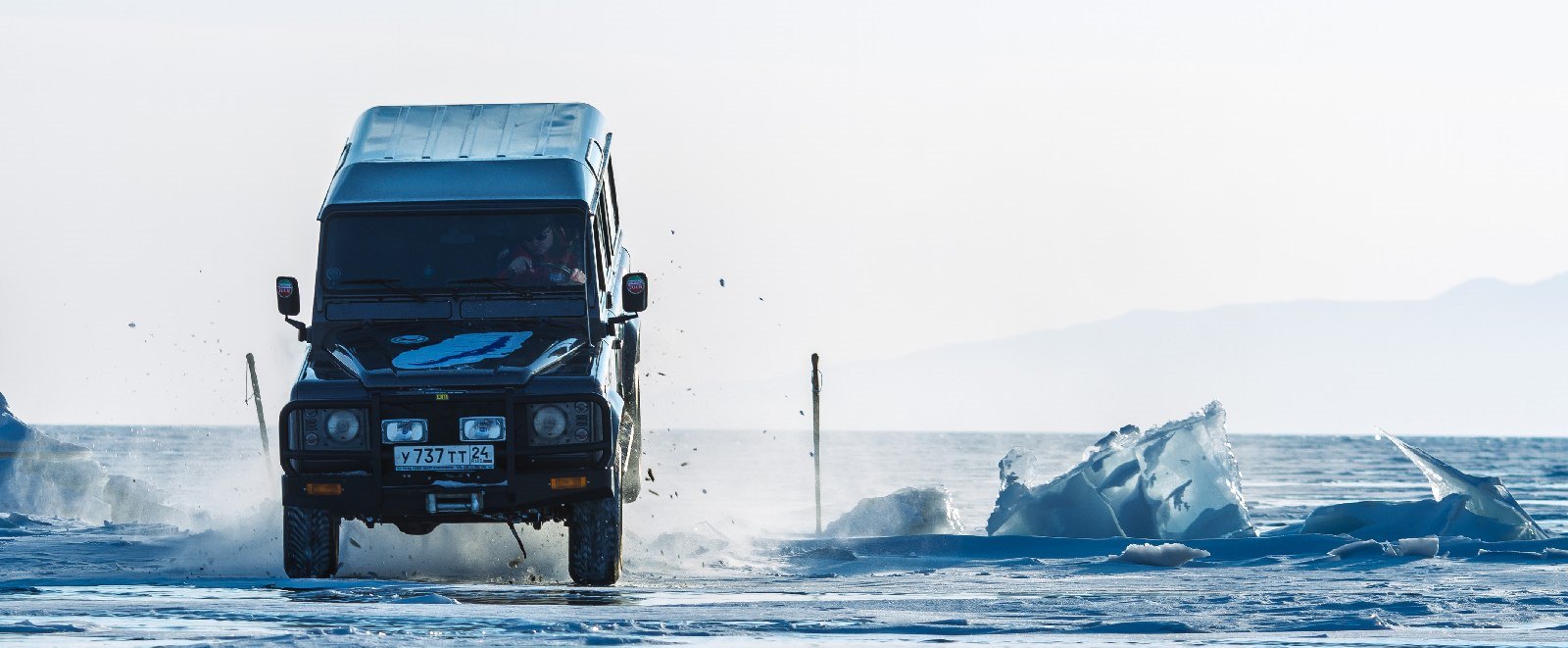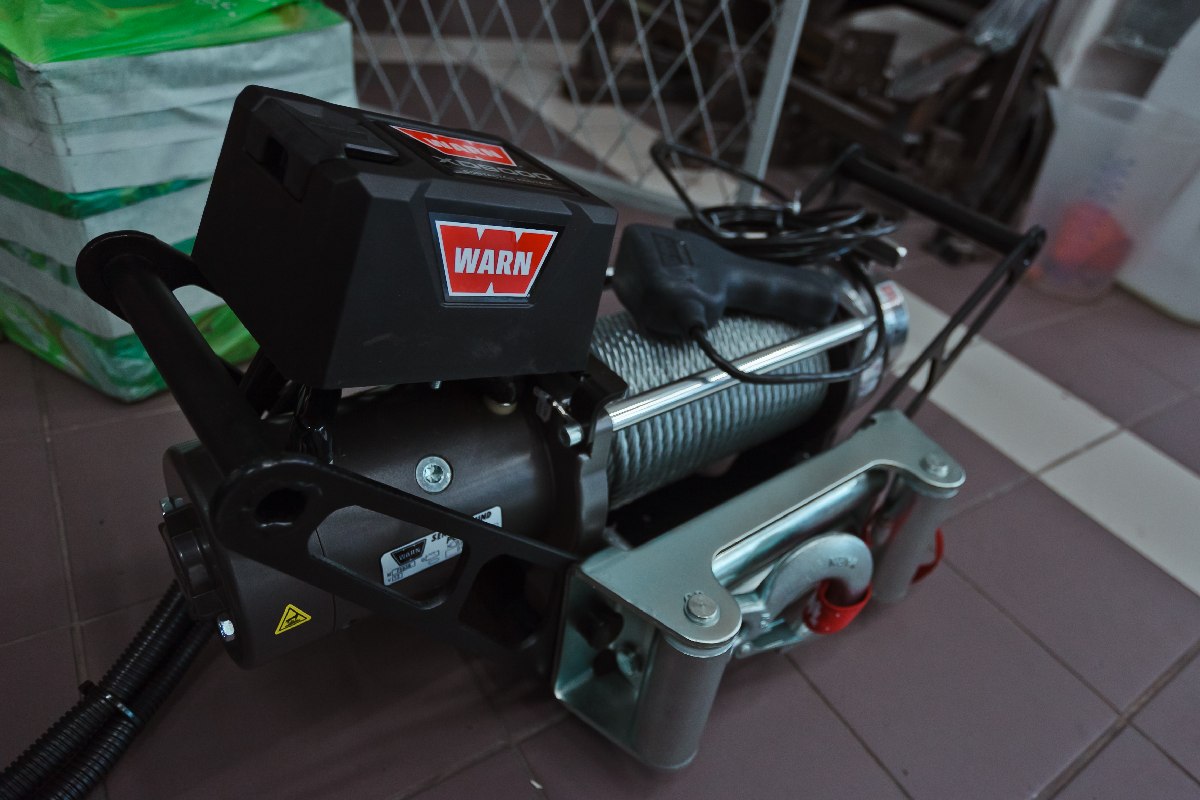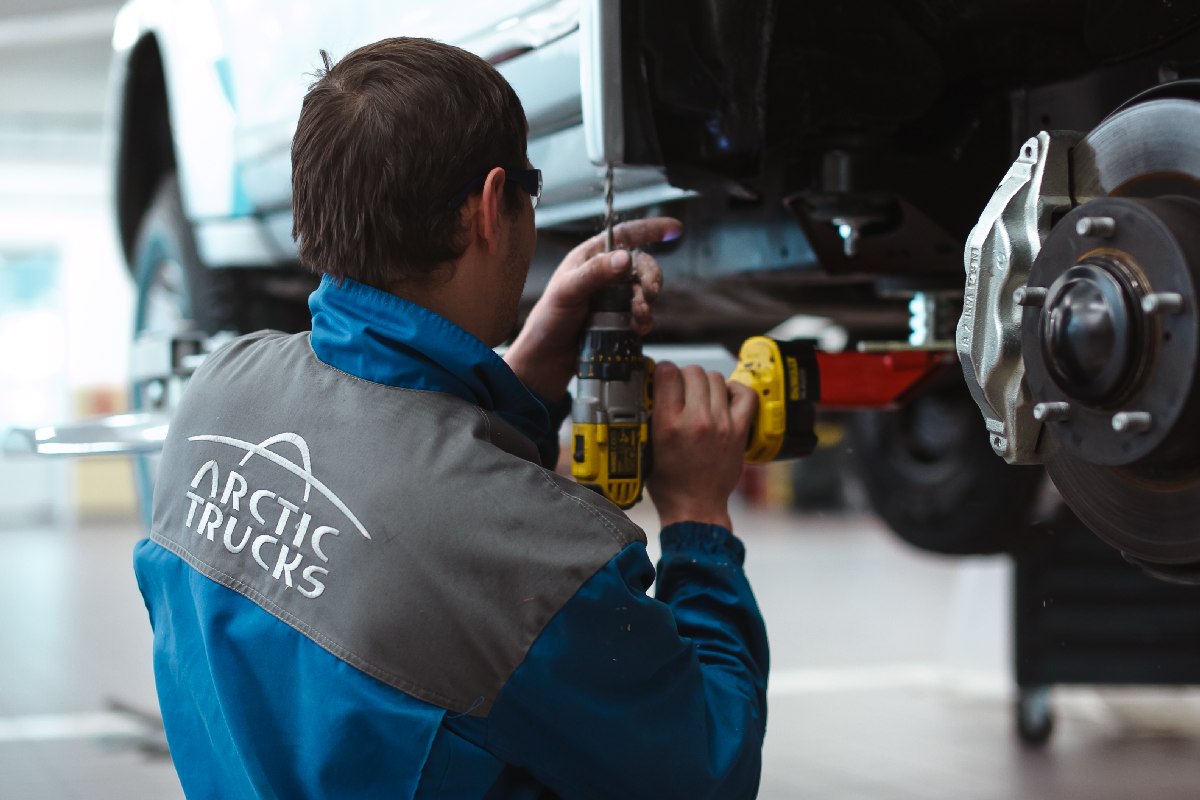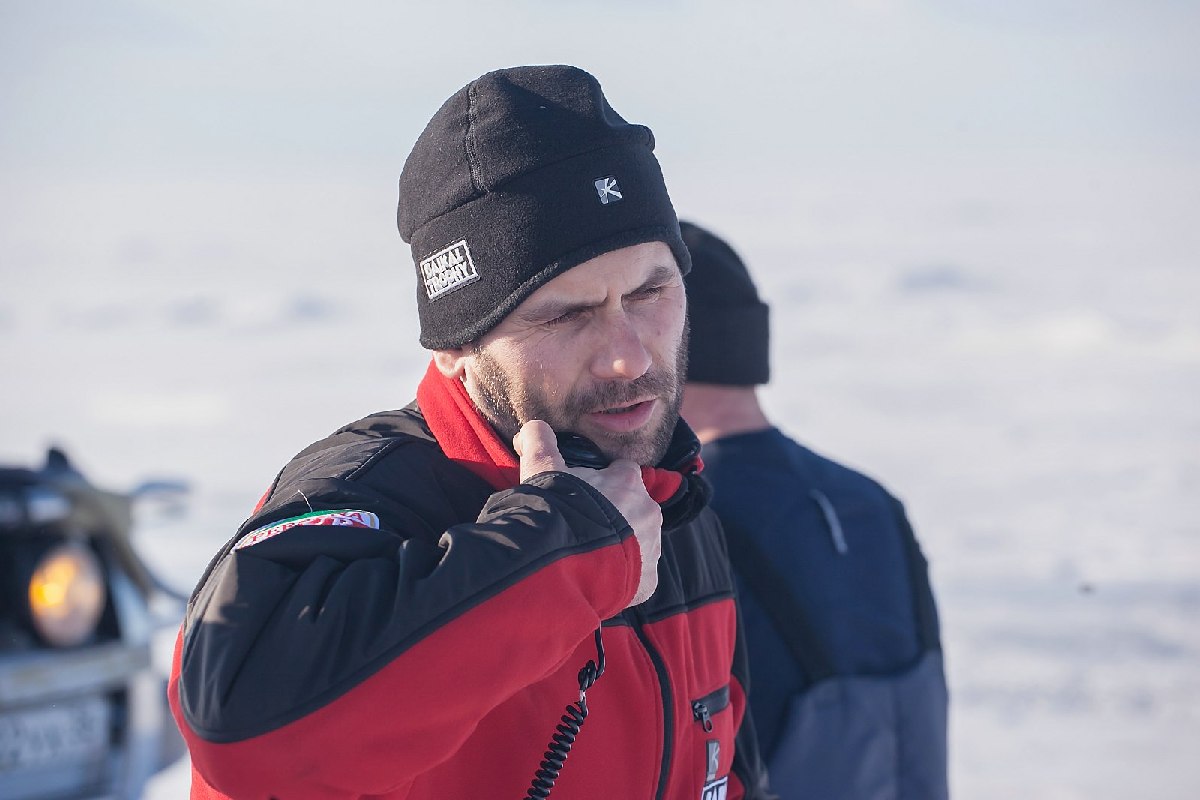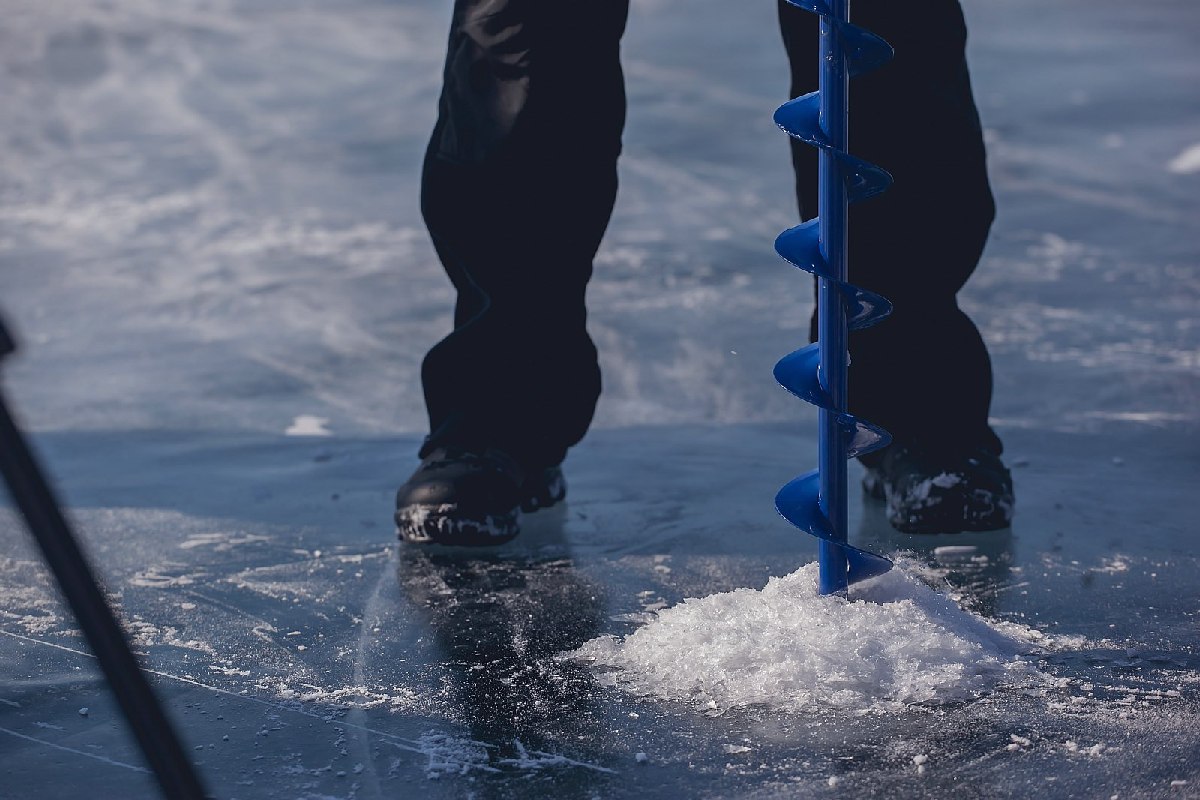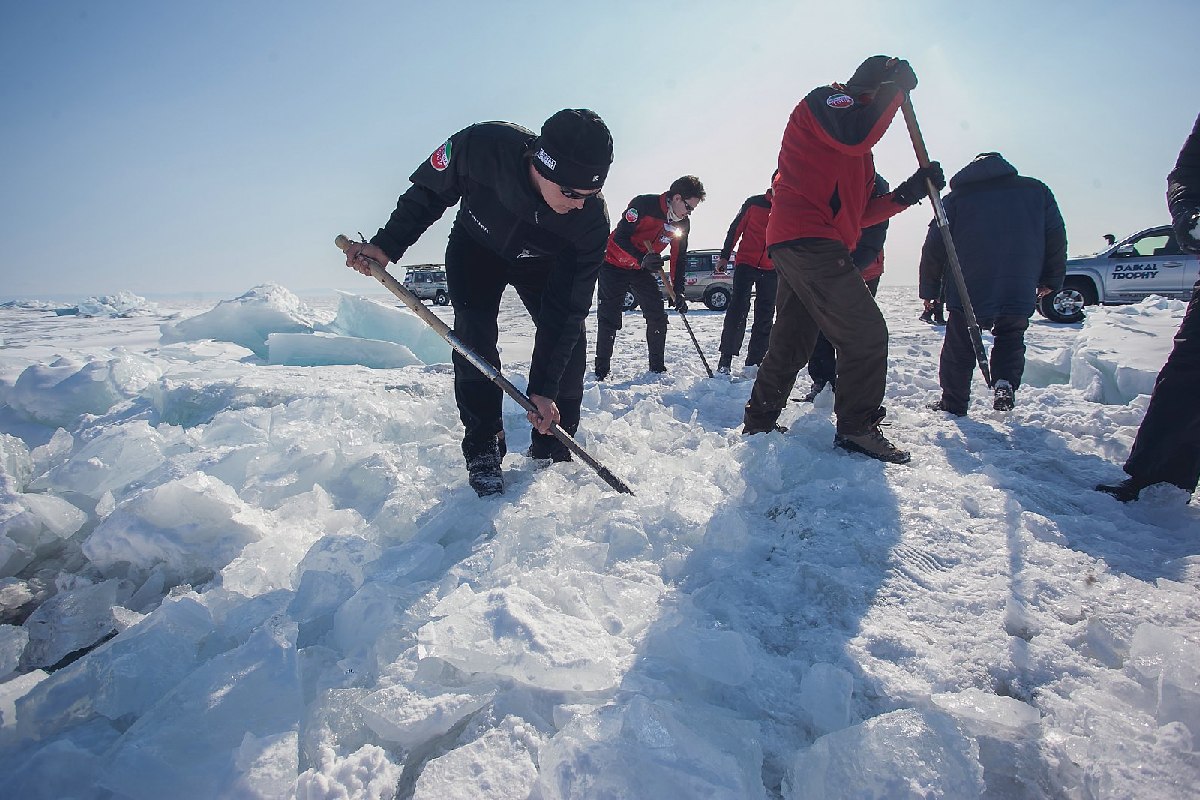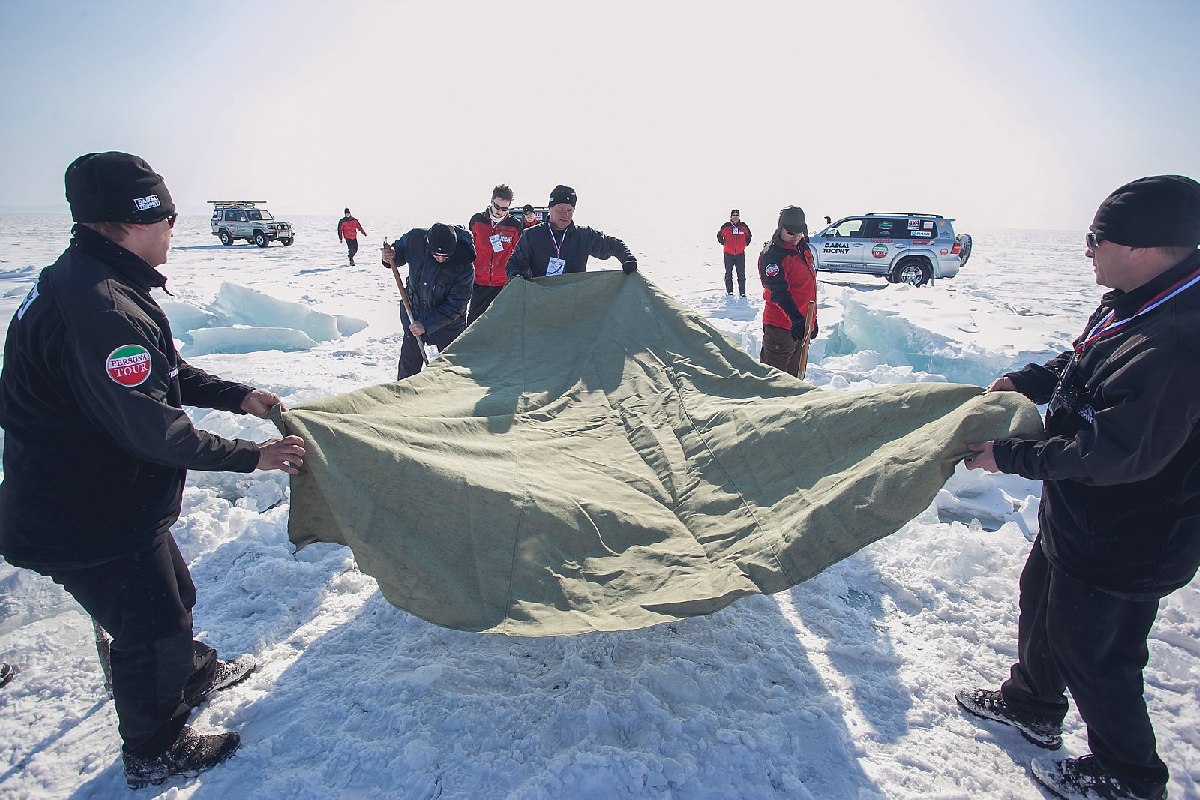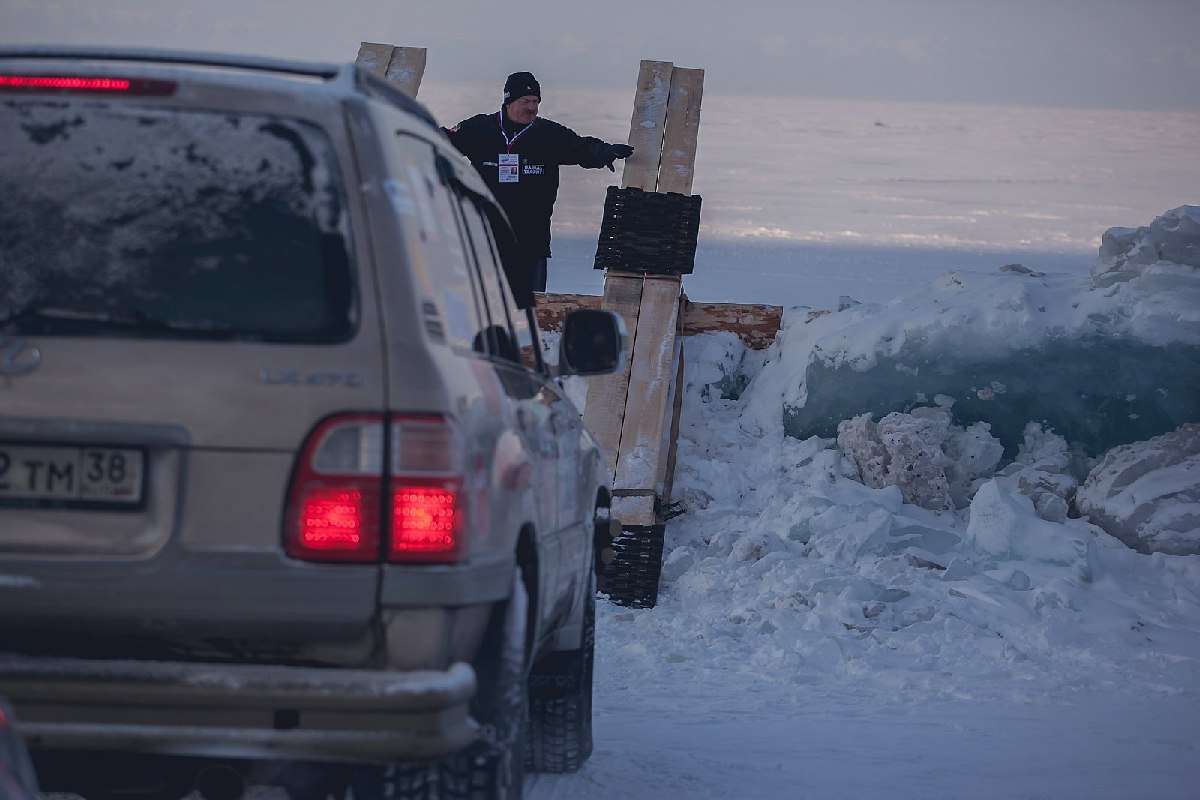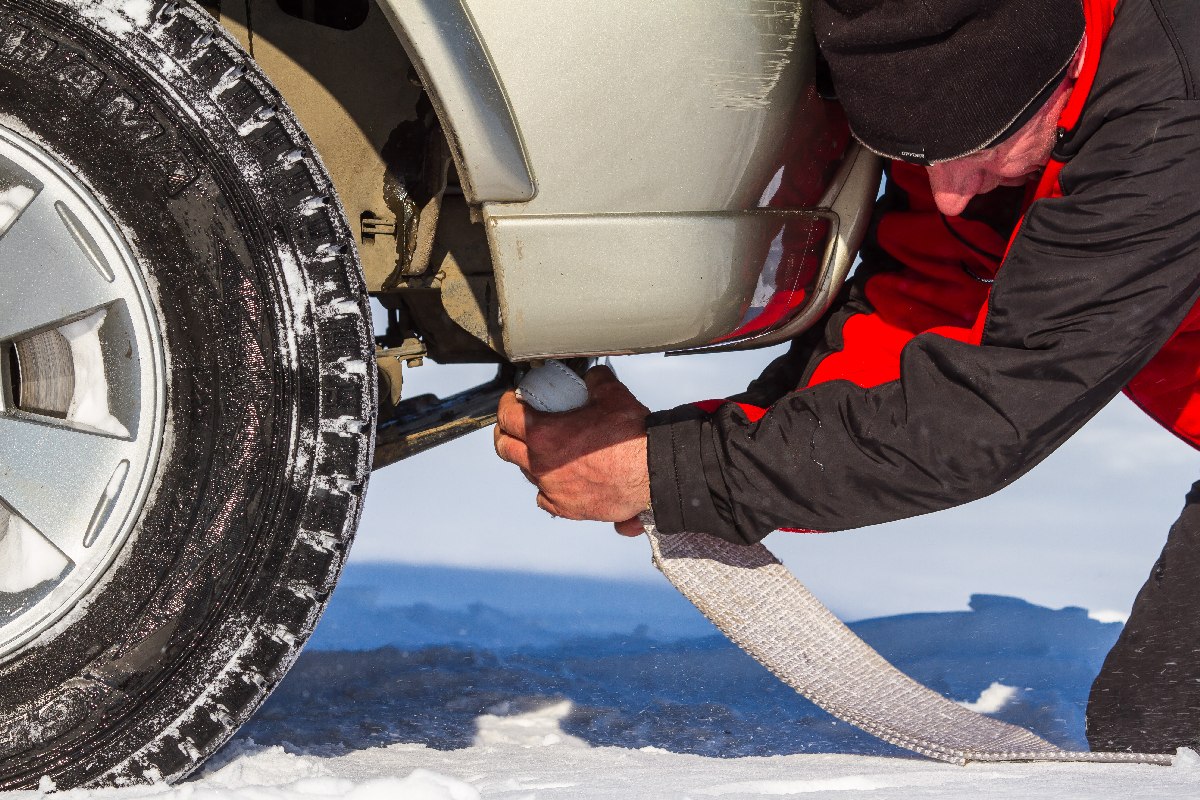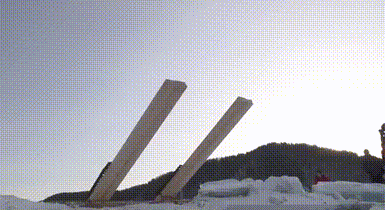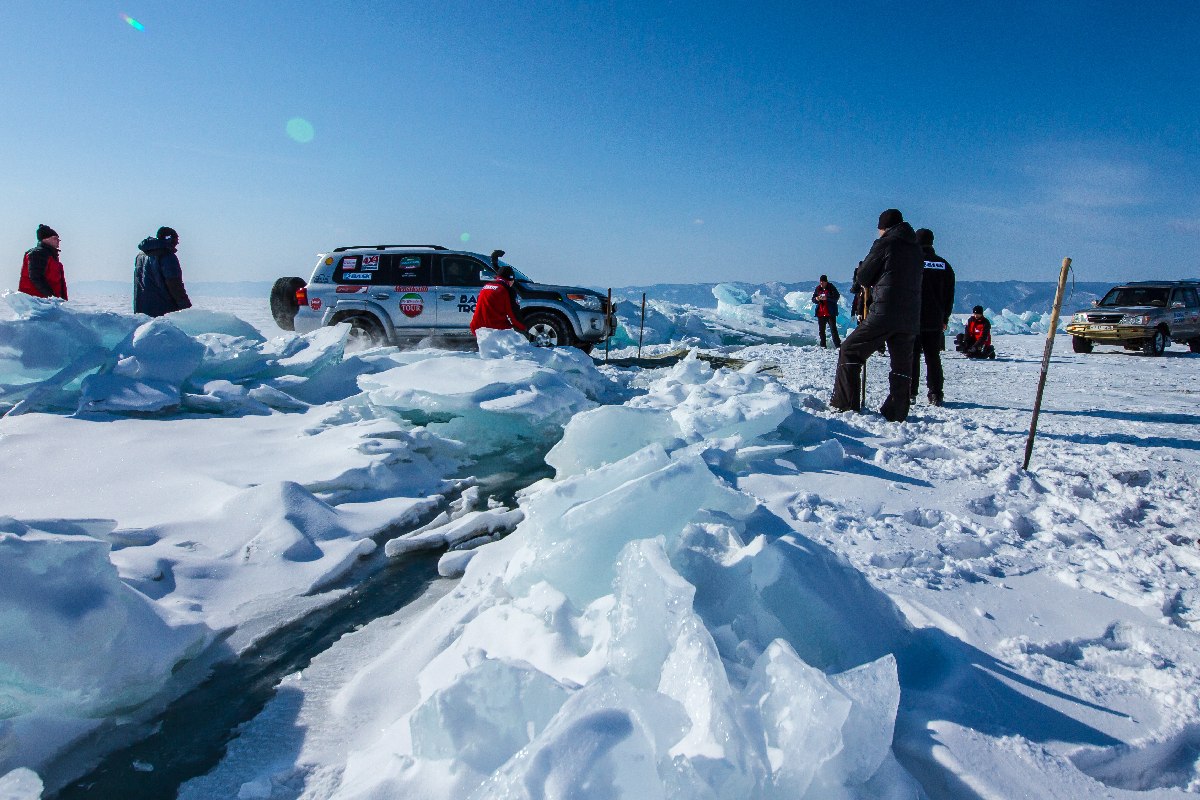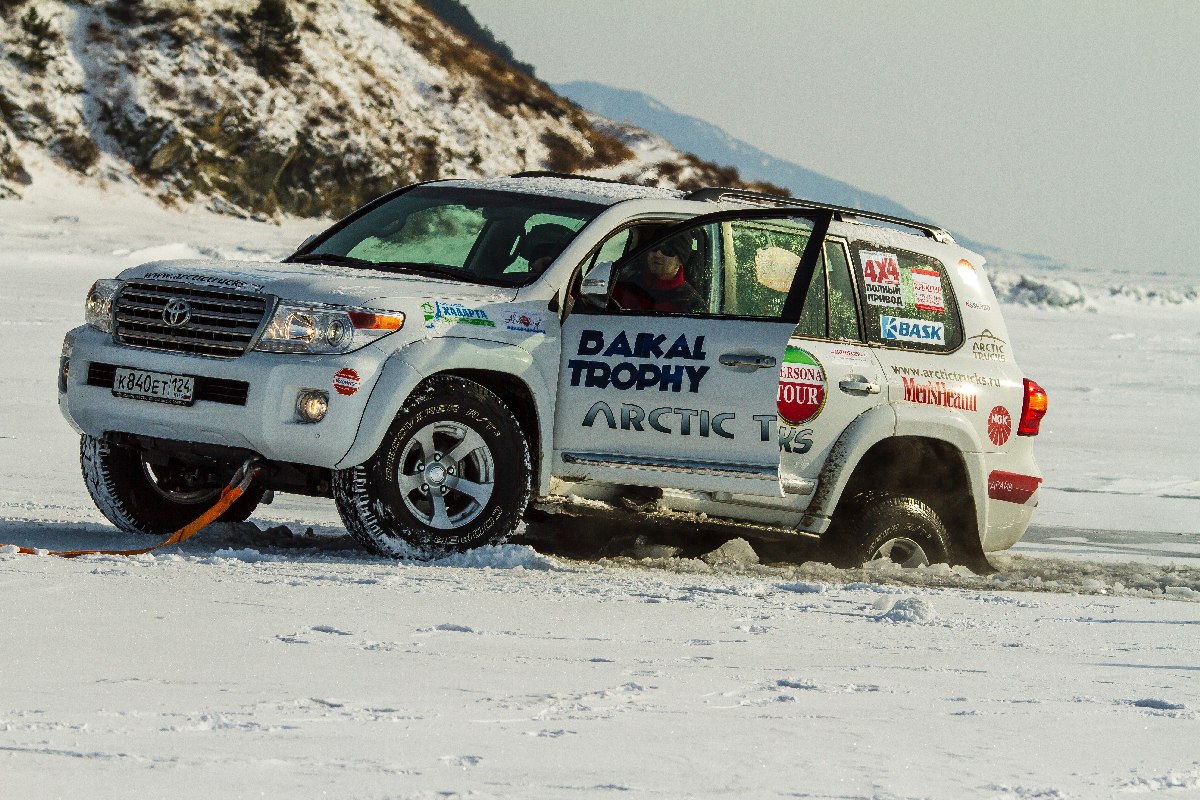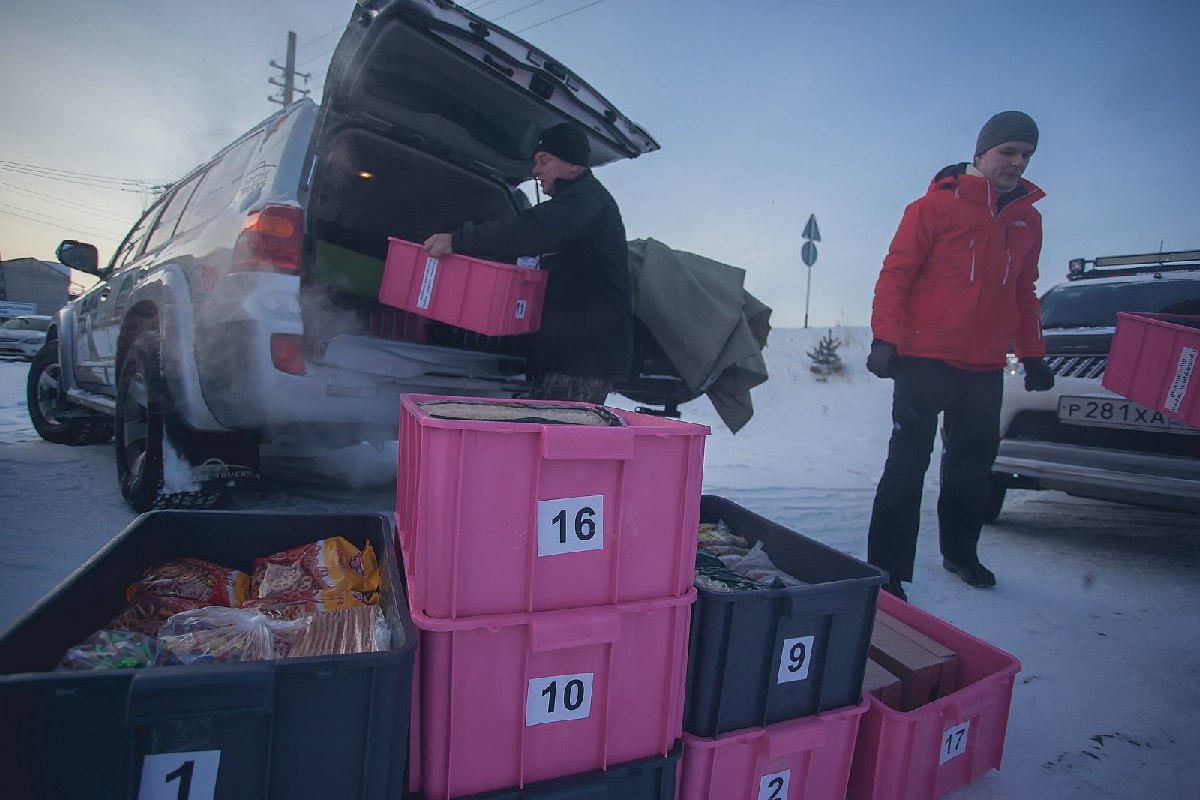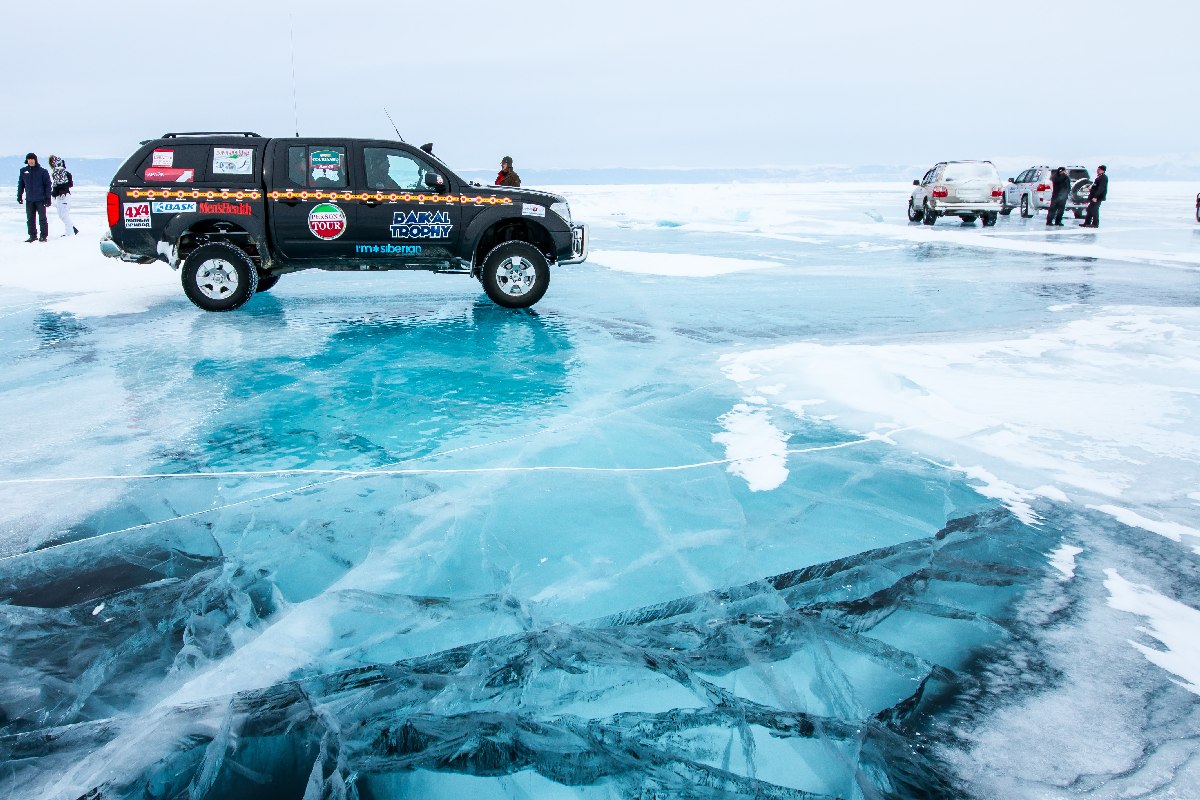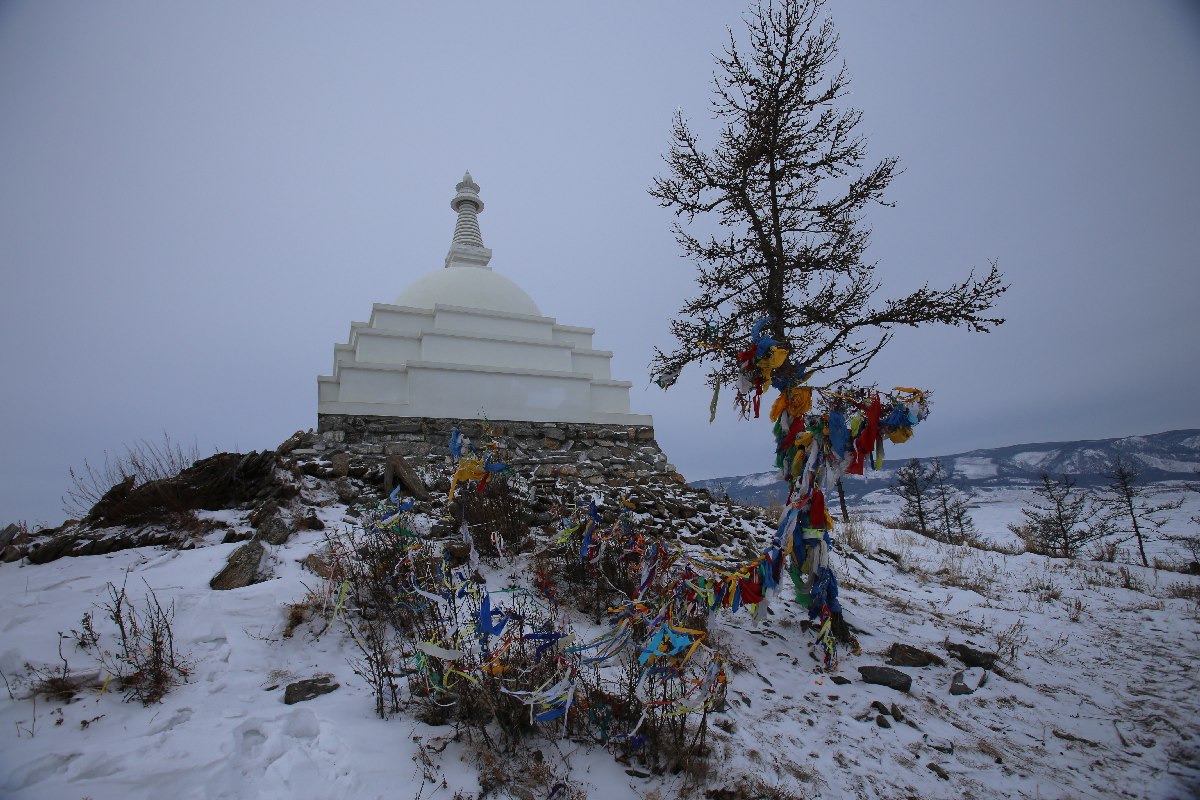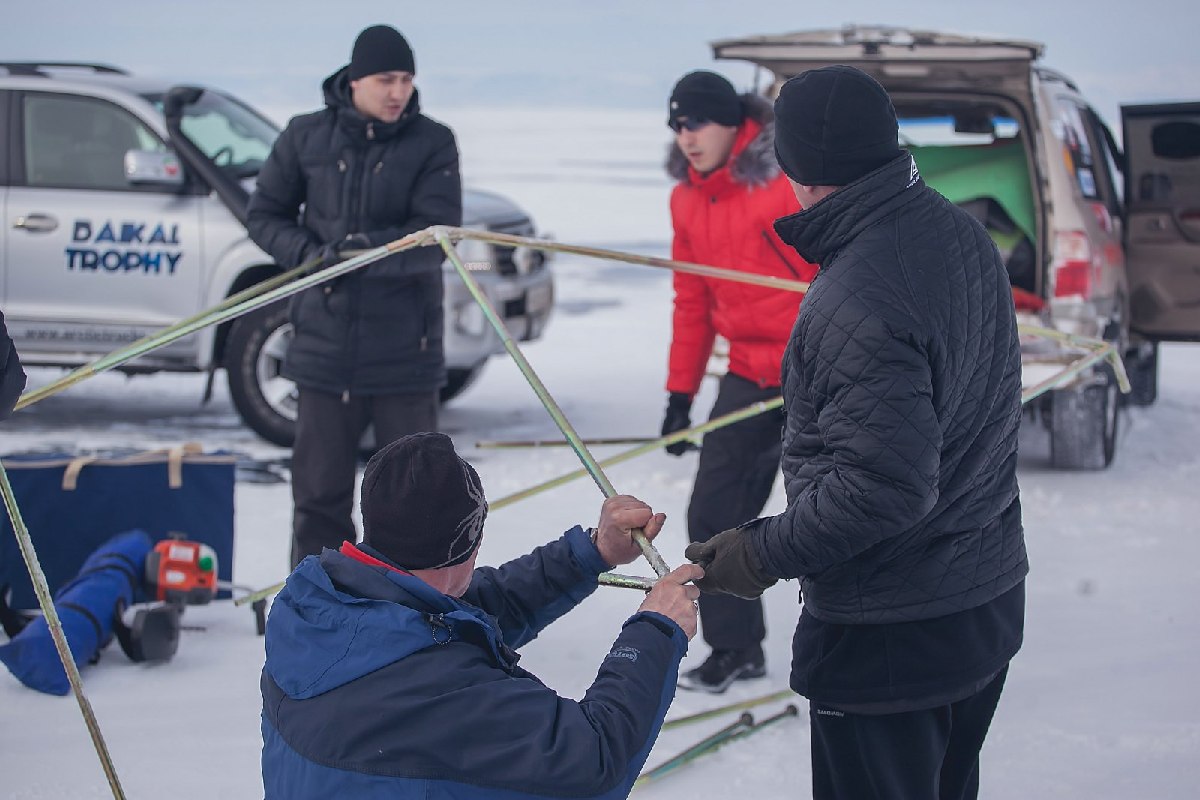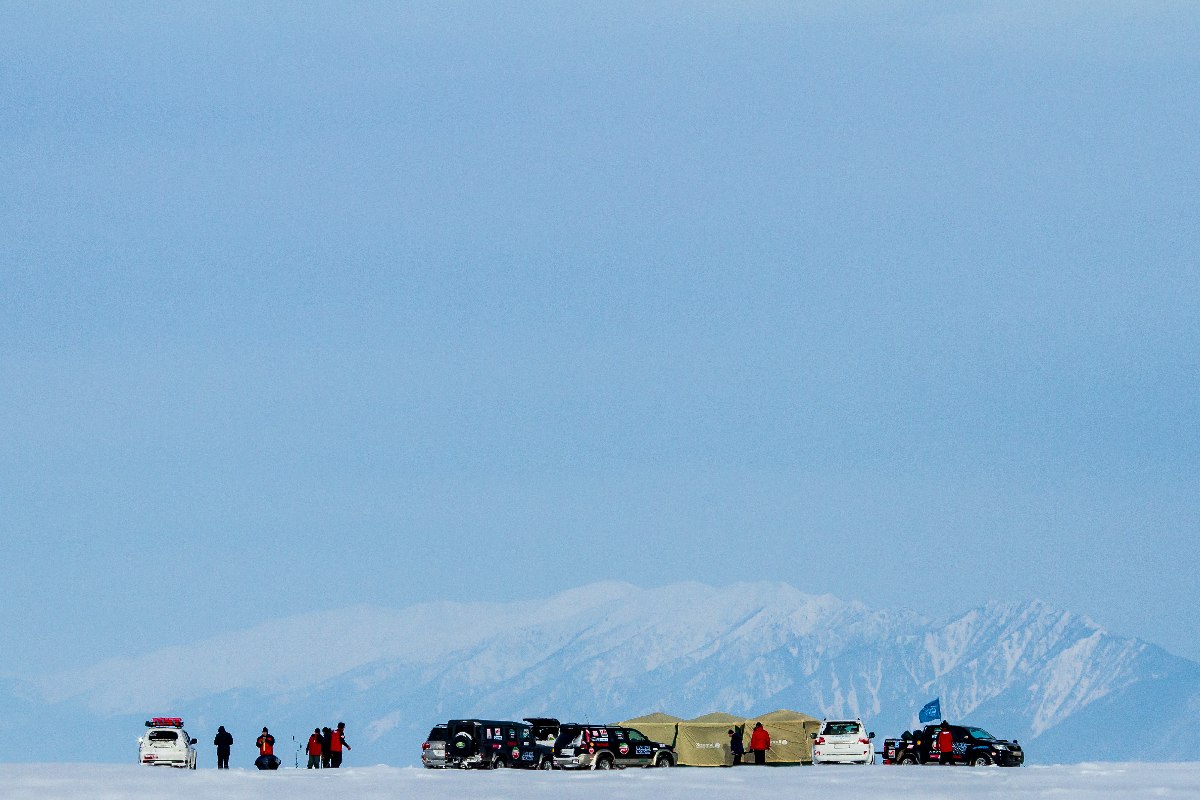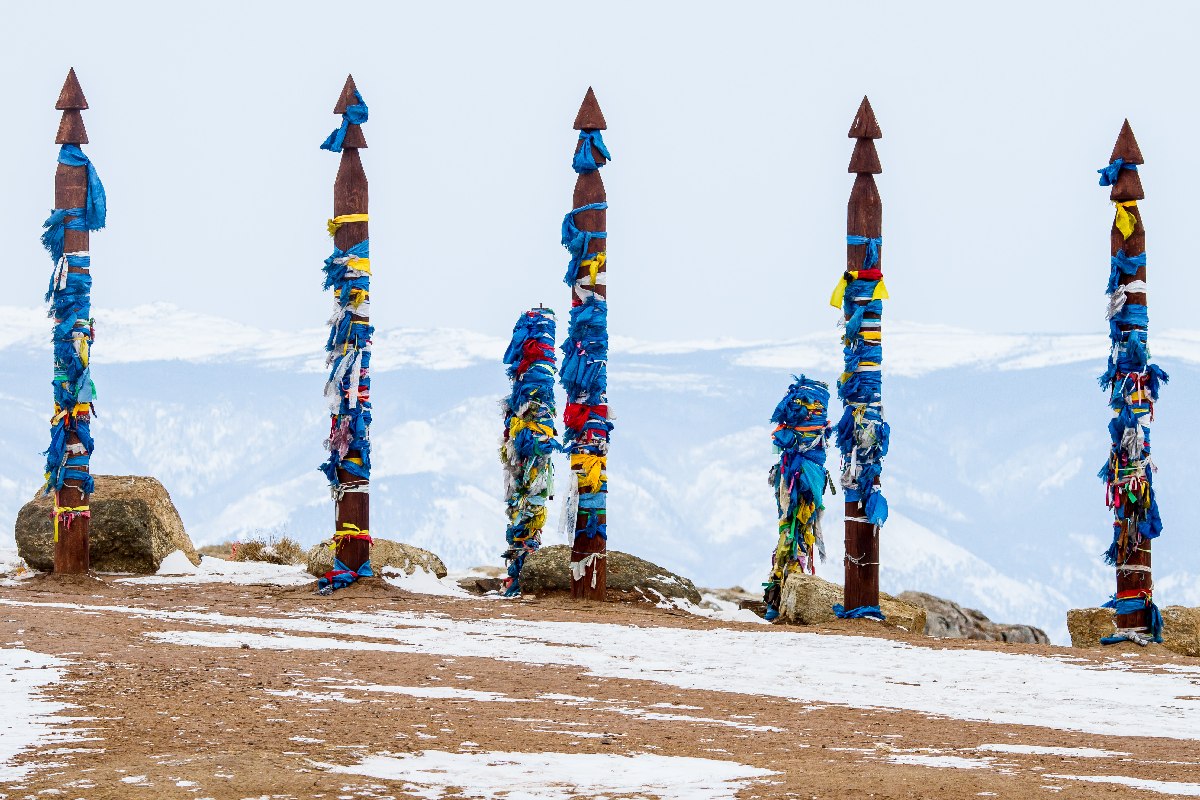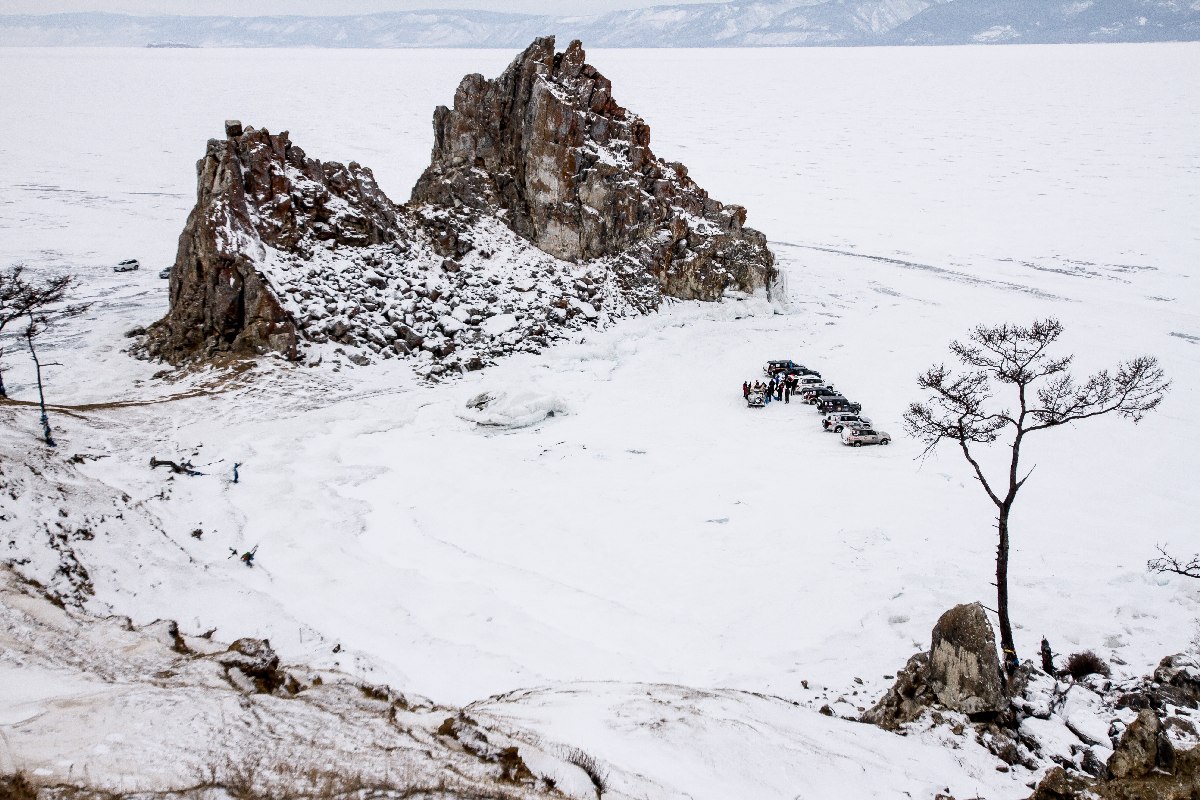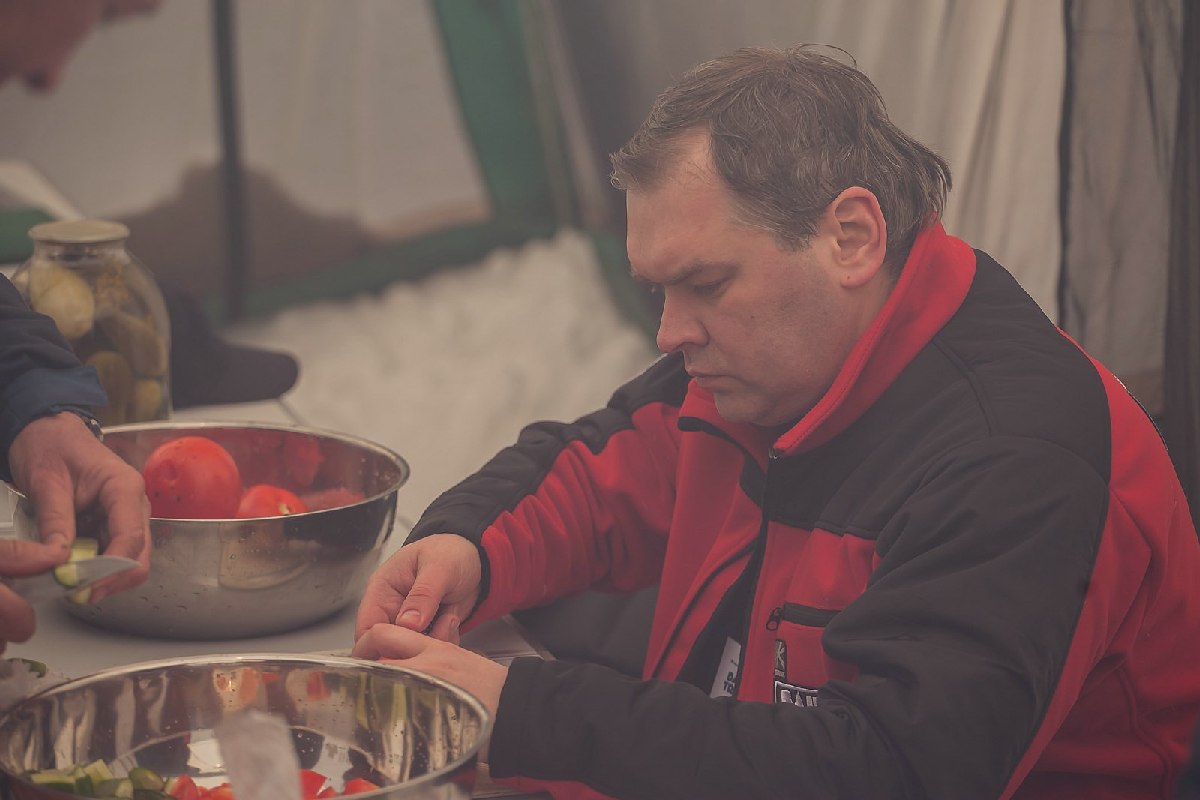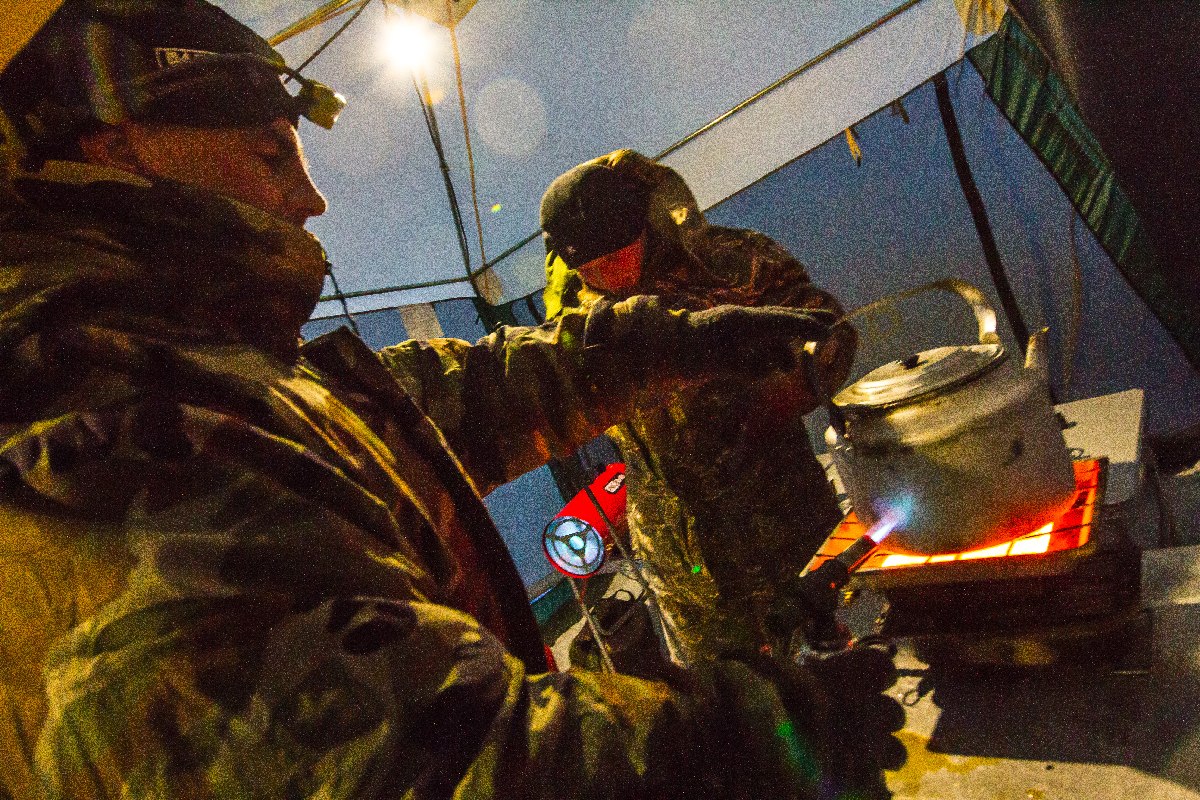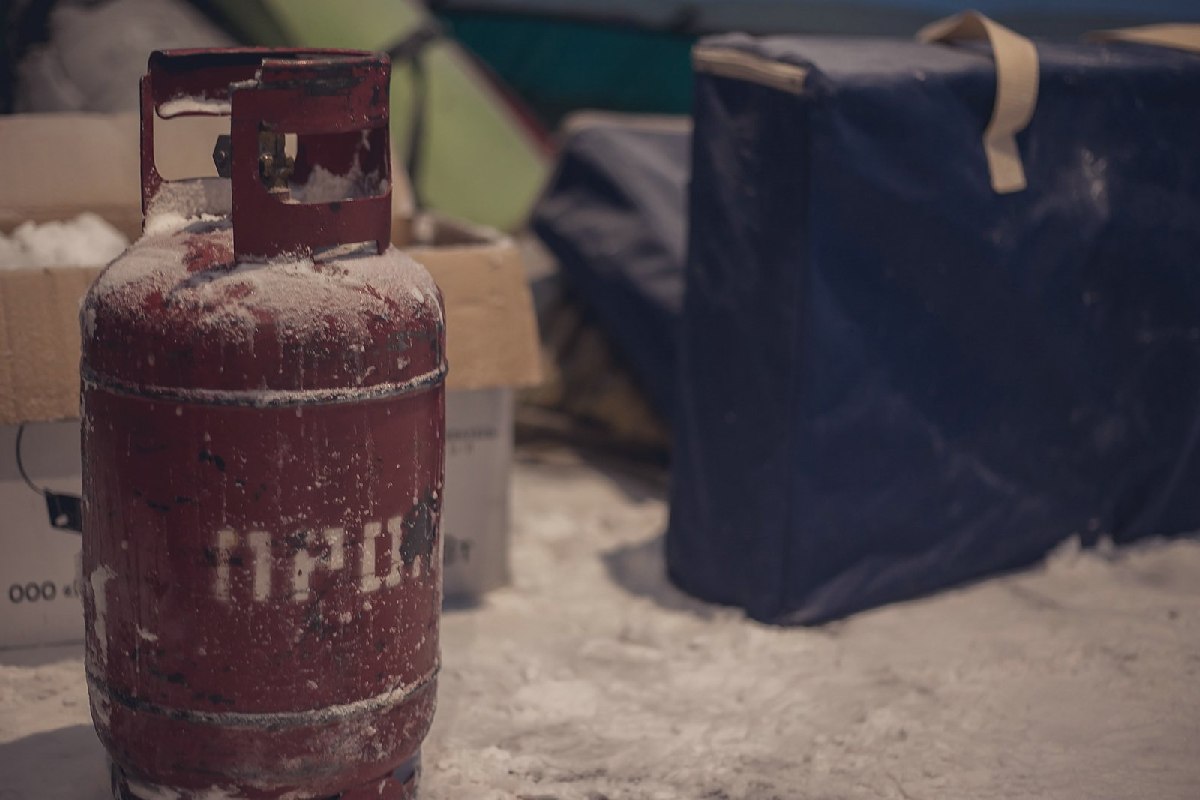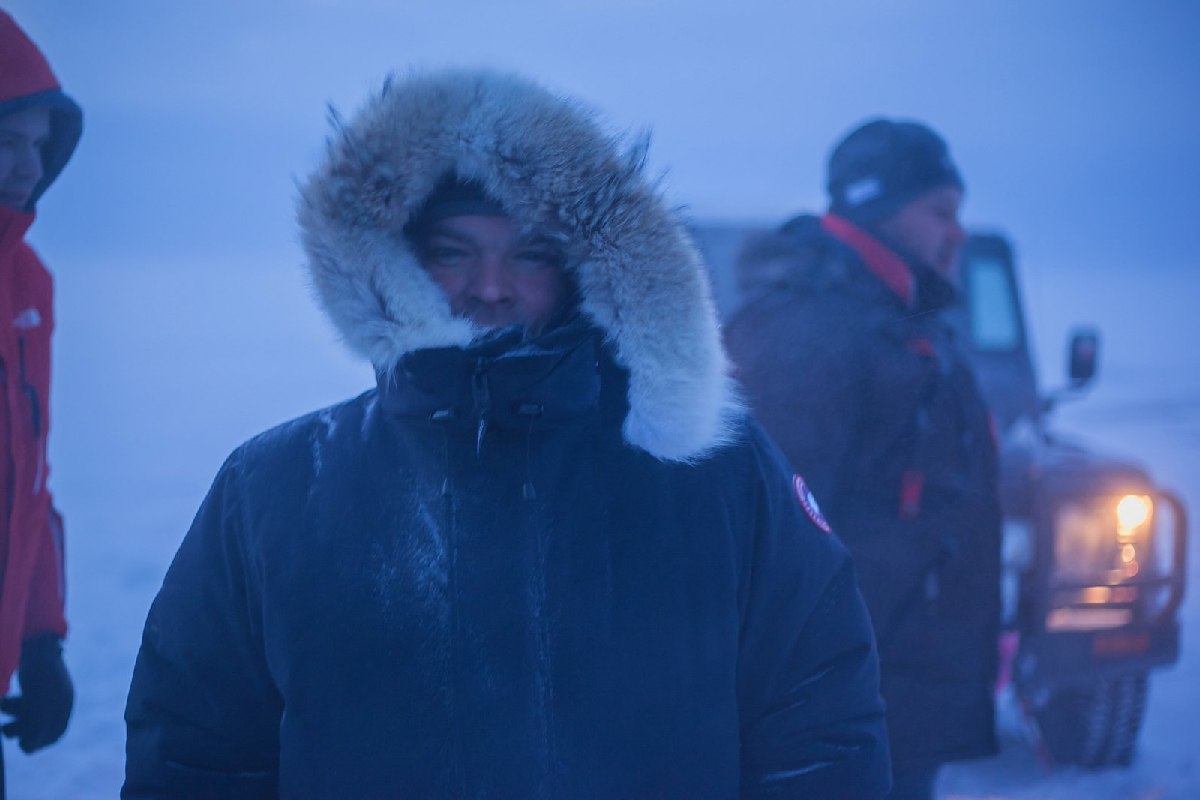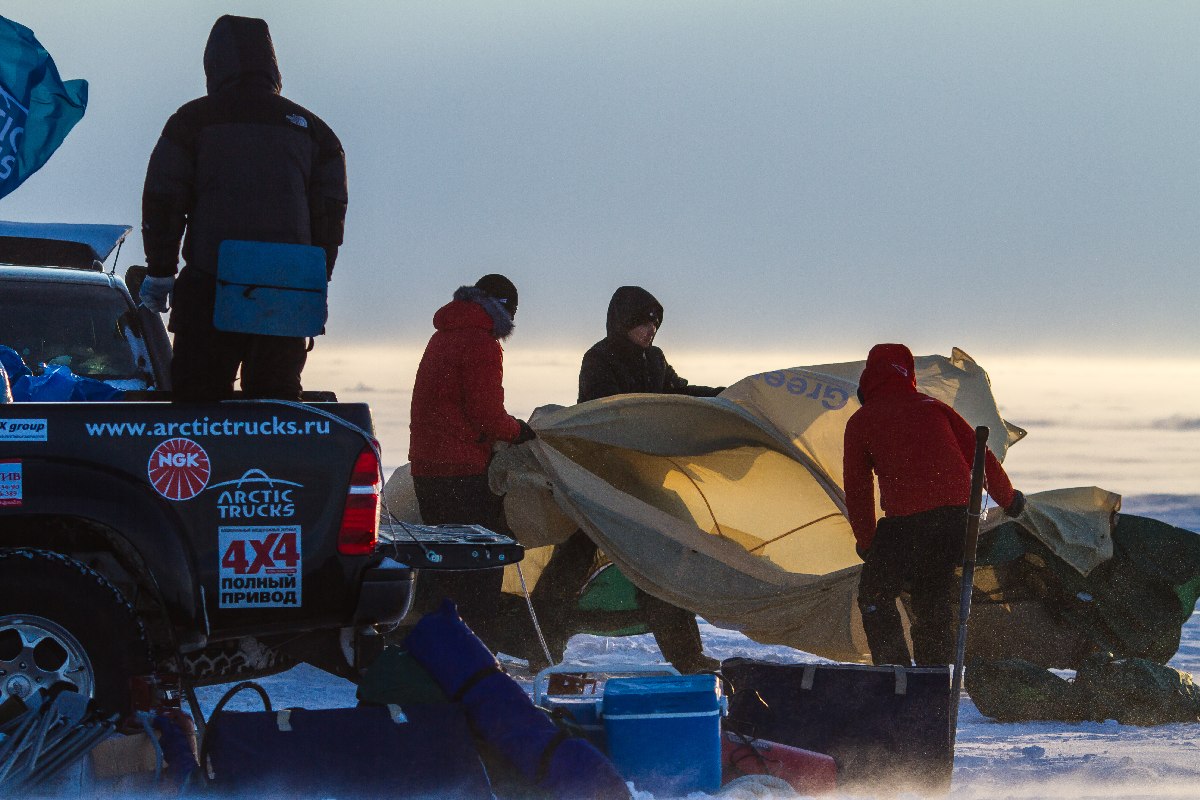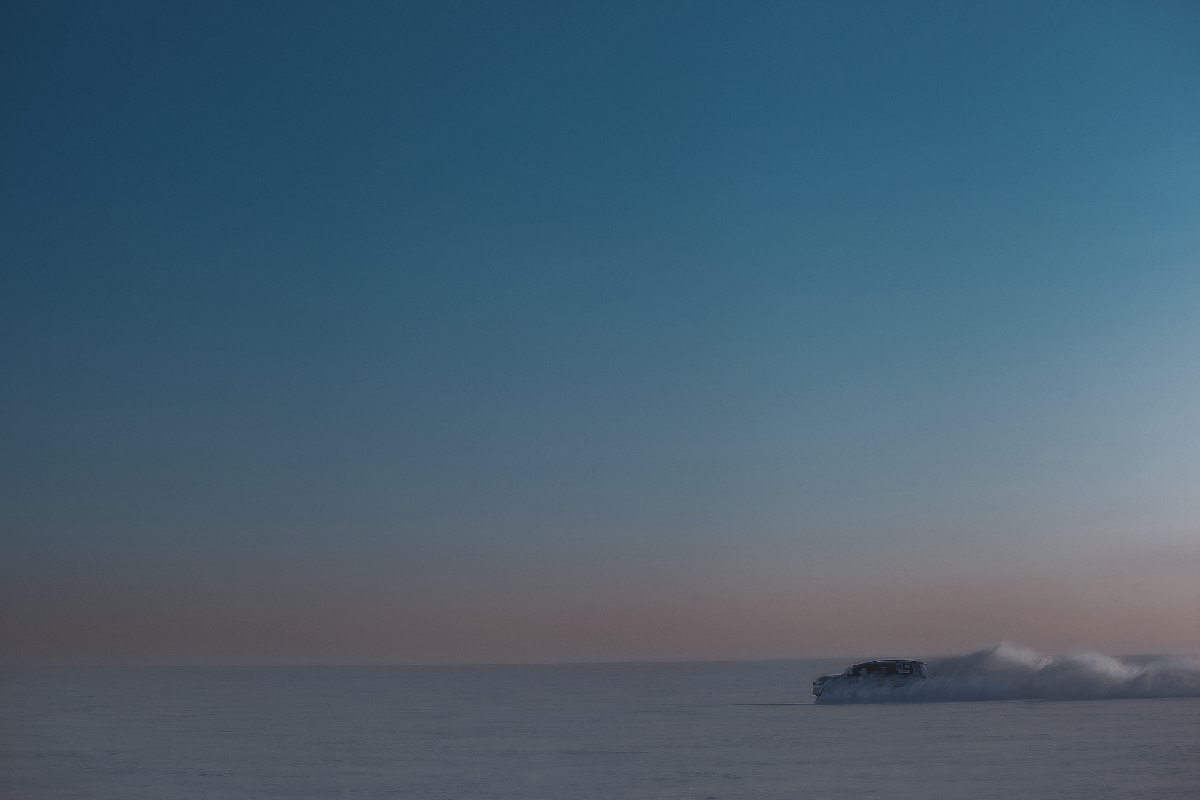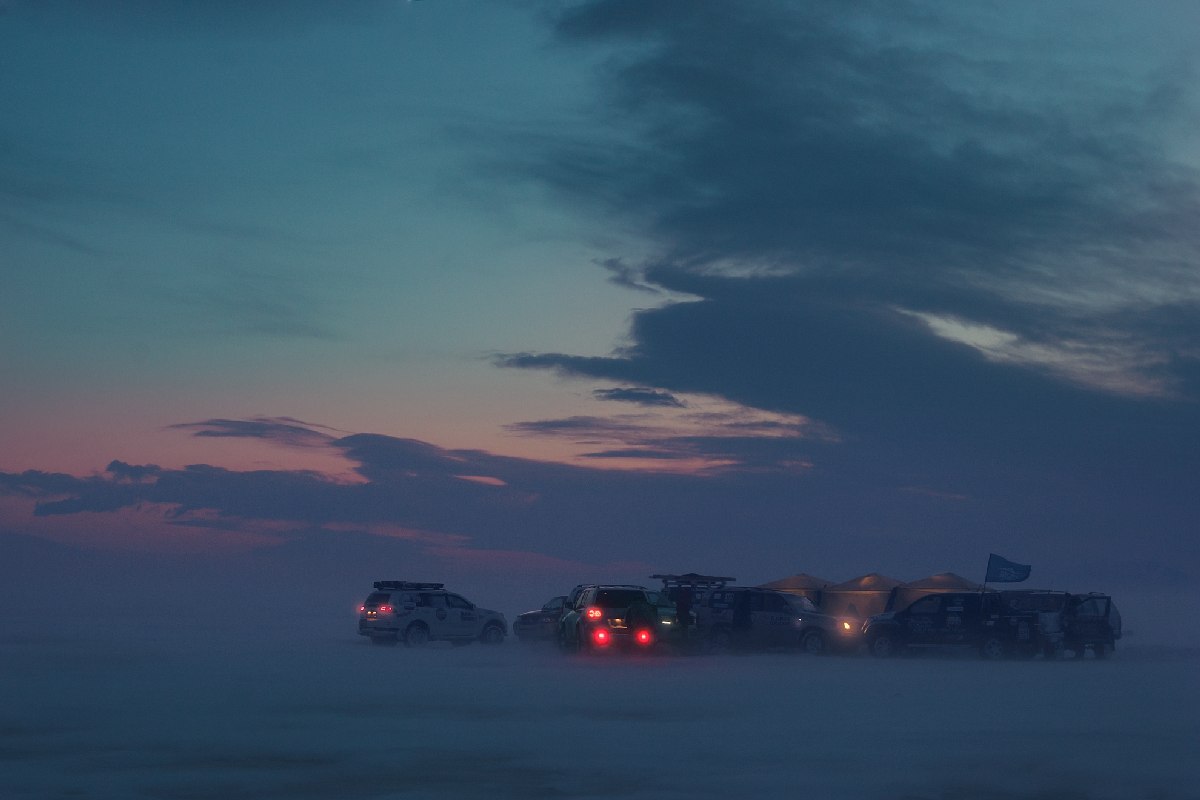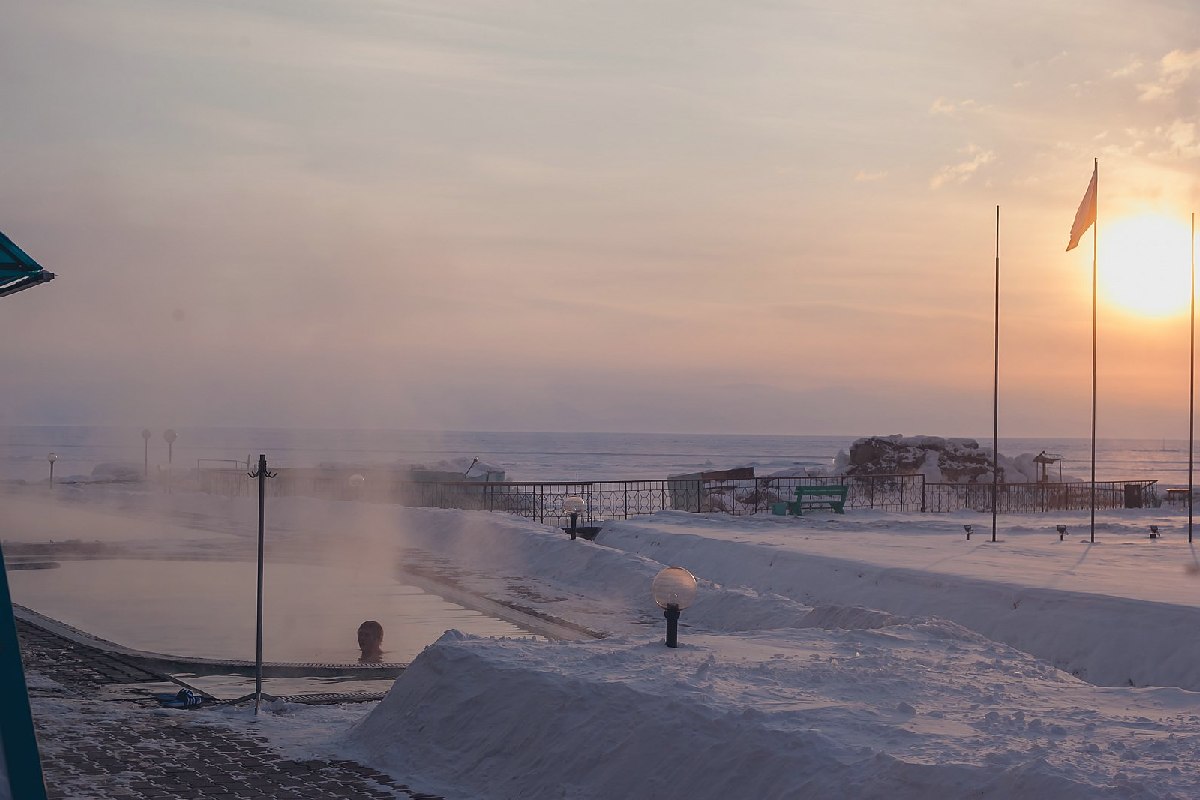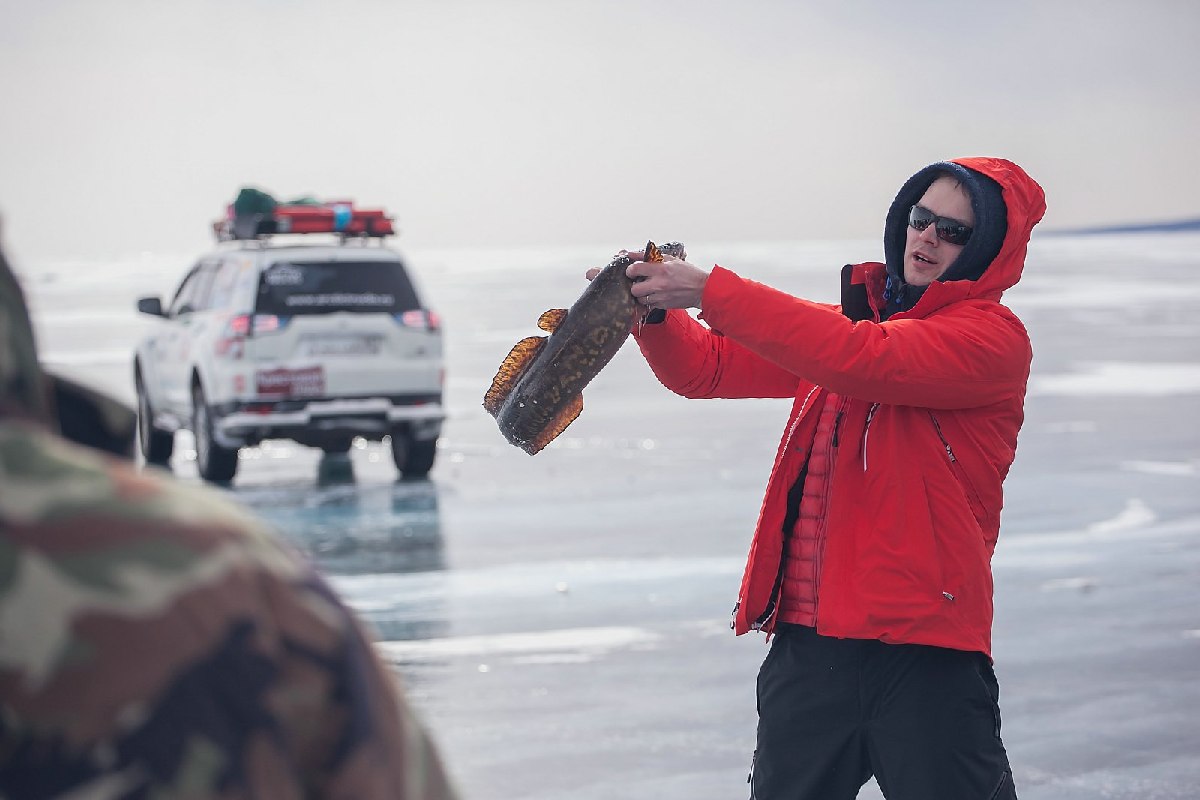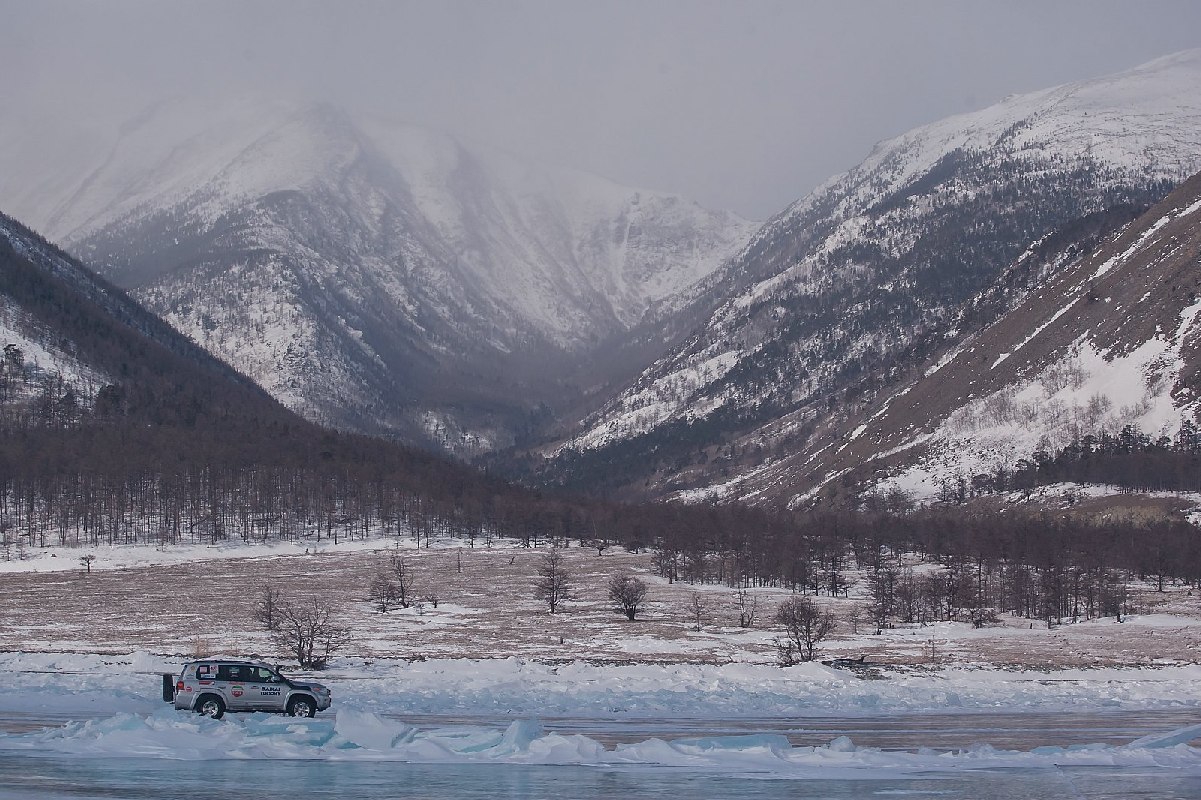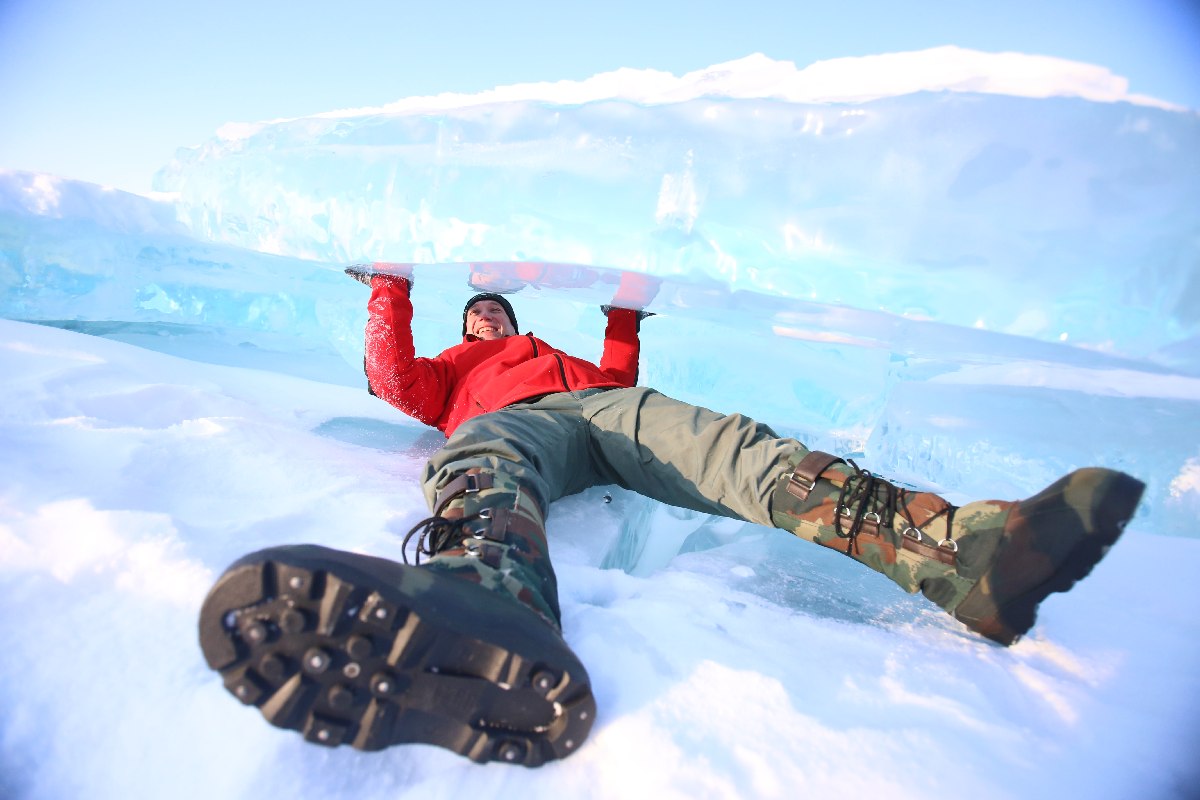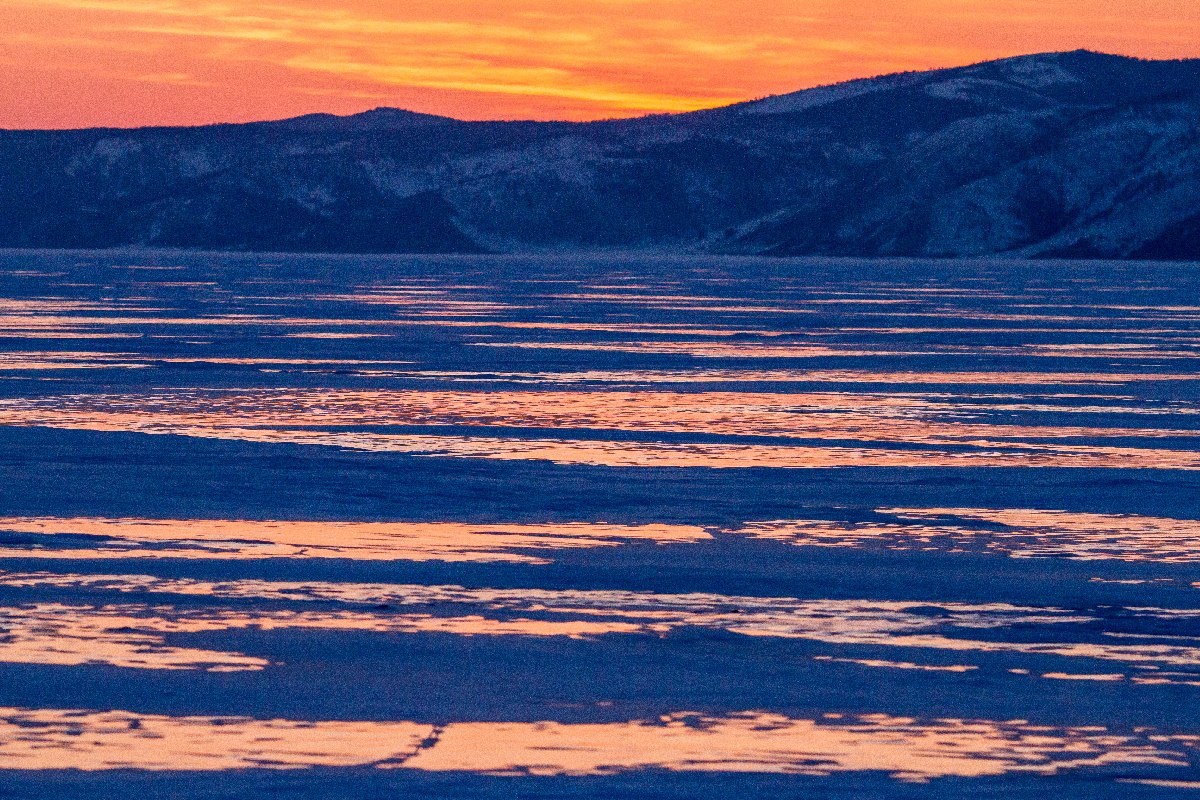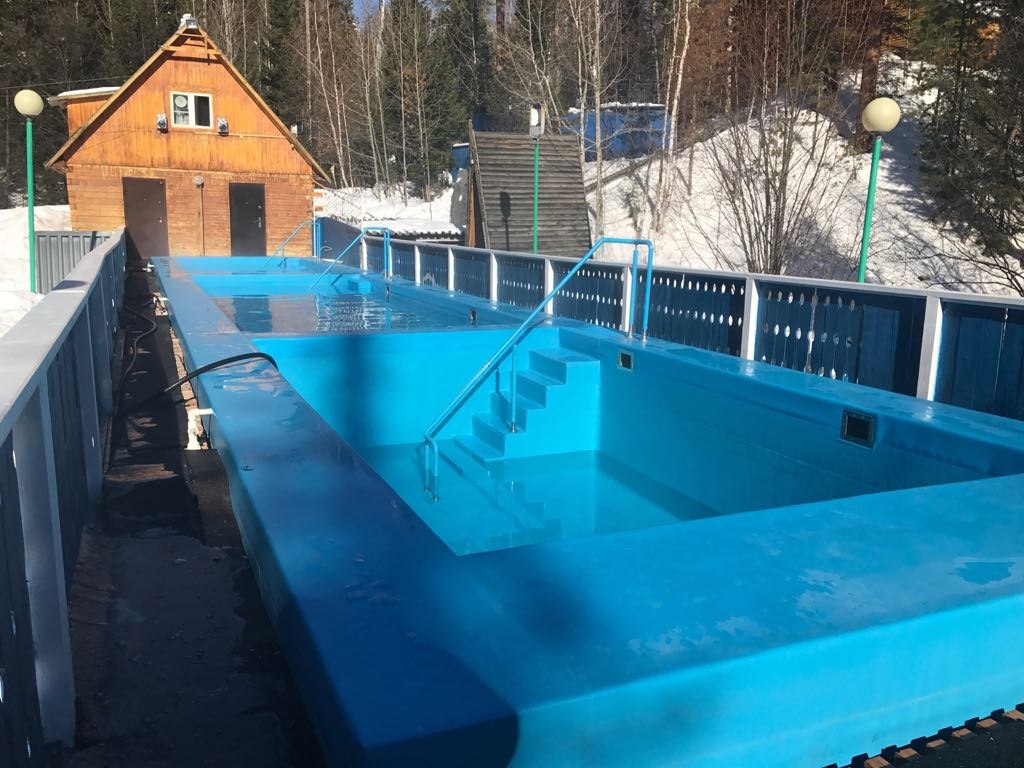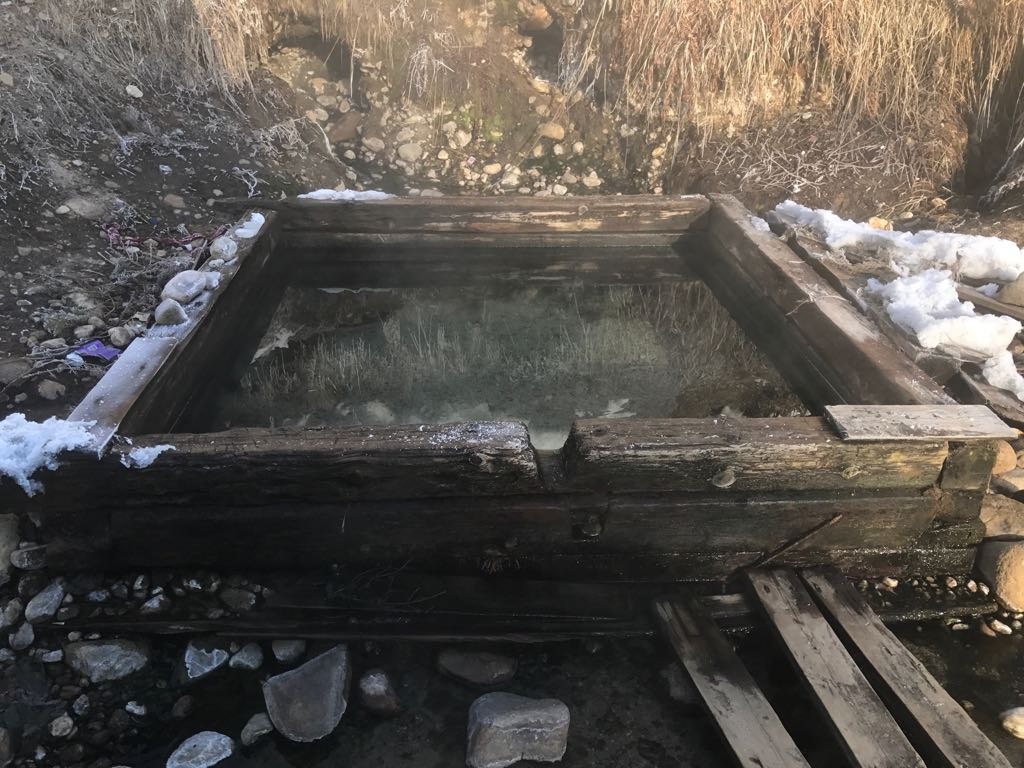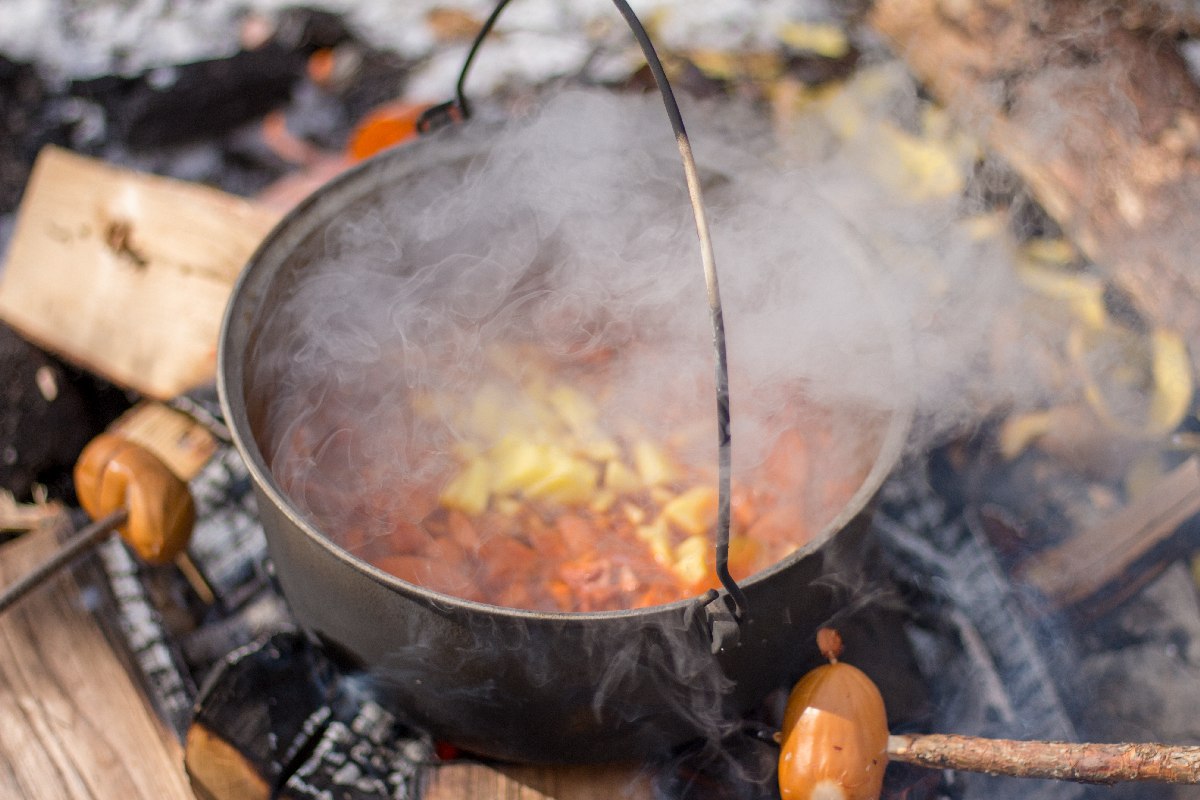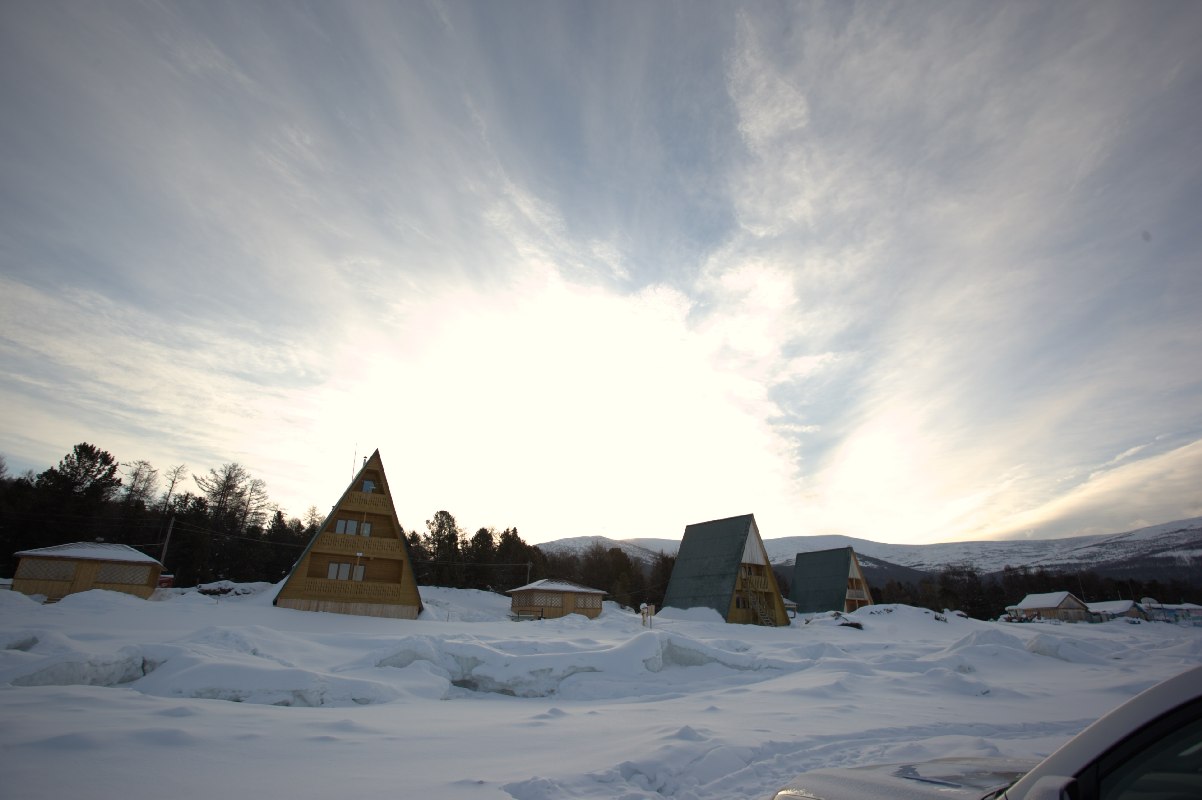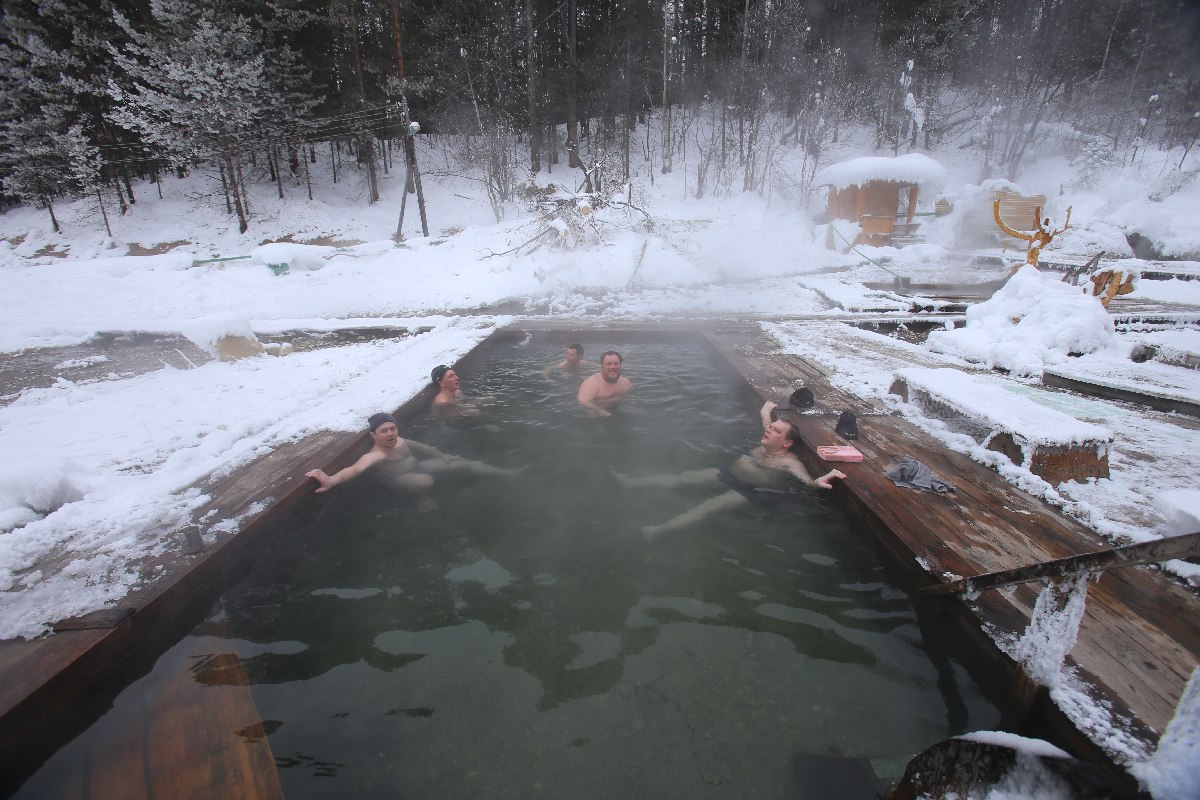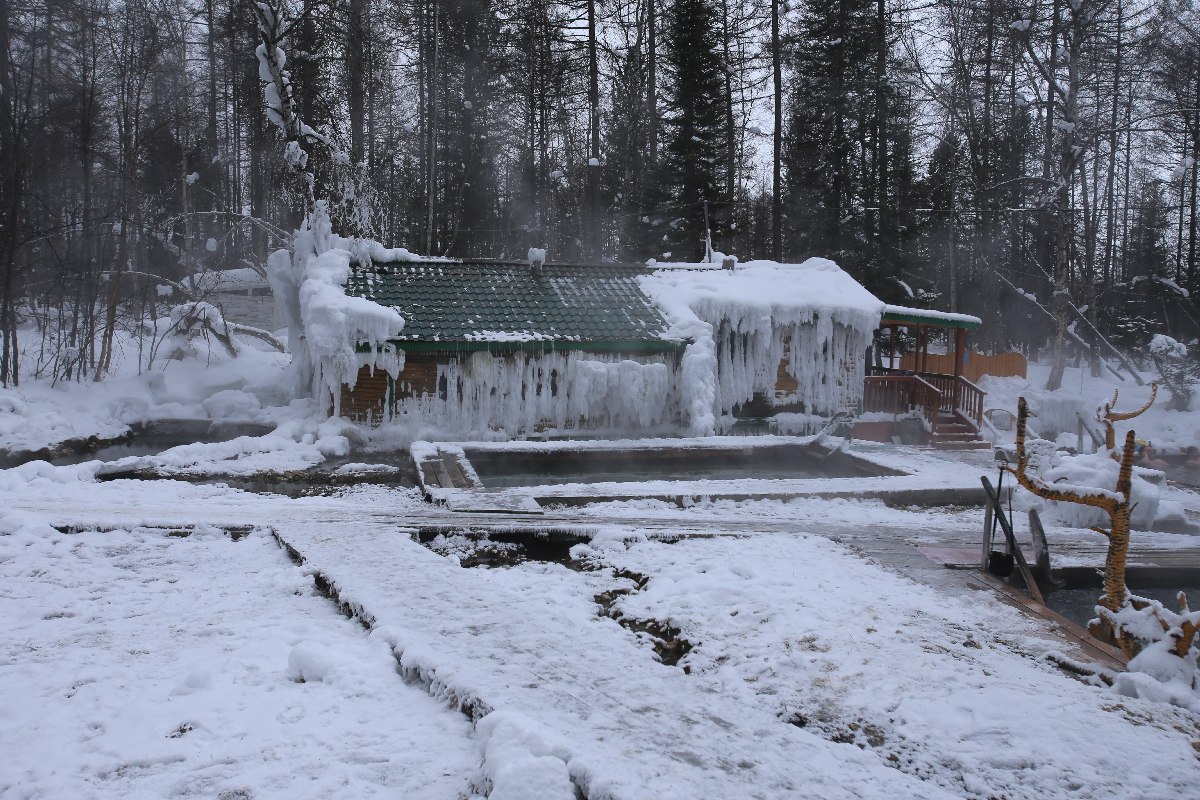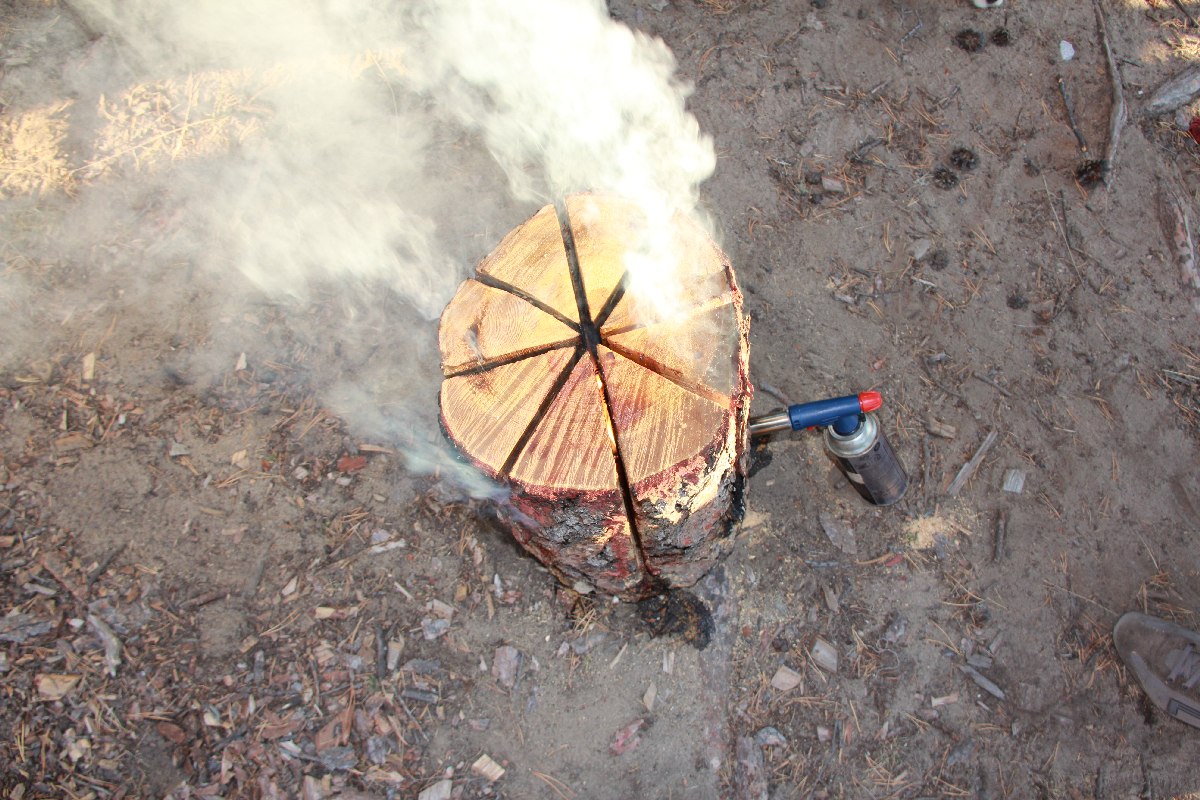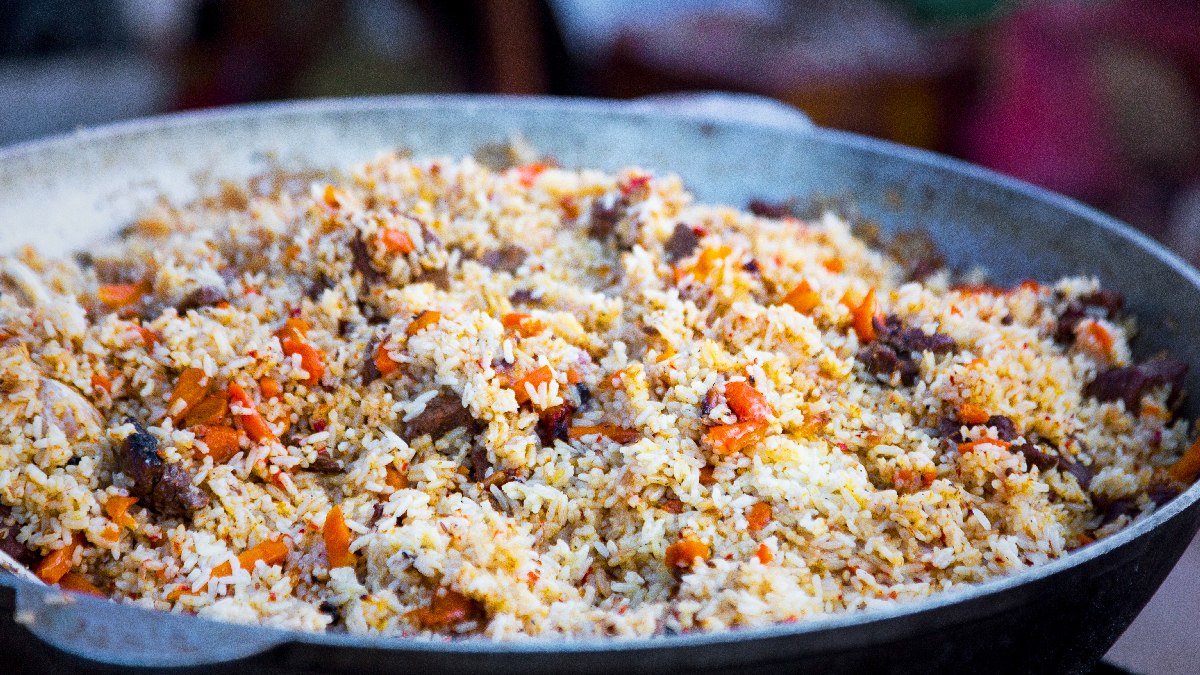To cross the Baikal on ice by SUVs from the South to the North — from the Village of Listvyanka to the City of Severobaikalsk. On the way to visit the islands of the Maloye More and hot springs in the north of the lake.
7 days before the start
The season of comfortable movement on the ice of Lake Baikal is very short, it lasts only a couple of weeks in early March. At this time, the weather is spring-warm, and the ice is the strongest. In the period from 1 to 15 March we take our guests either to Iceland or to Baikal. This year we chose Baikal.
Before the start, we went to Baikal several times to check the condition of the ice. Practice shows that even if you today prepared a GPS track for a safe route, it's not the fact that tomorrow it will remain the same. Baikal is an active seismic zone, a more or less static parameter in the range of 7–10 days is the thickness of the ice. If the ice is thick and its structure is uniform, then you can go. We will have to adjust along the way under the map of cracks and hummocks.
In such travels, we try to take no more than 12–15 people, including guests and a team. If there are more participants, they are divided into subgroups, team management is difficult. On Baikal this is also due to the lack of infrastructure. In this trip there were six organizers and nine guests, whom we invited from different cities of Russia.
Day 1
We met at the airport the morning flight of Aeroflot and gave the participants the keys to the cars. To the next day, it was easier to “get involved” in the process, we conducted the first test drive on the ice. We showed the features of control, the technique of passing of cracks, hummocks, snow outlines and pulling out the car from snow by a dynamic rope.
Once in our practice was the passing of an ice hummock with the help of a “swing”. This way of passing the obstacle was invented by our old friend, he called it “Bowing to Baikal”. Because of the large weight and specific rubber, the car couldn't fall down, but it shifted to the side and fell on the ice hummock. From the impact cardan shaft broke in half.
The team spent the evening in a country cottage. We again discussed the route, instructed and checked the equipment and cars.
07:00–07:30
Getting up
07:30–08:30
Making breakfast
08:30–09:30
Breakfast, collecting things
09:30–20:00
Departure to the ice, passing the route
20:00–22:00
Arrival to the night stay, dinner
The schedule is necessary for discipline. Long distances, conditions of limited comfort, life in a small team make you tired quickly. To make things easier, we need a common goal. In our case — to reach the end of the route. And life on schedule is one of the components in achieving this goal.
Monotonous movement along the ice is diluted by contemplation of nature, communication, overcoming of cracks and jumps through ice hummocks. Every 60 minutes the column stops to warm up, take a photo and have a snack. Despite the fact that we spend 8–12 hours per day in the car, there is no opportunity to get bored.
To level the change of time zones, water, air and sleep, it is important to balance the food. Preparing food for the trip, we calculate the daily average caloric value for each day. If the plan is 12 hours behind the wheel and throwing ice, then we eat 3,500–4,500 calories. If we lie by the pool – we will limit 2,500. It is necessary for the team to be in shape.
For storage of products during road travel, it is convenient to use plastic boxes. For a quick search you need to number each box and pack the products by category: frozen, perishable, canned products, vegetables, fruits, cereals, pasta, etc. Plus, to distribute what is stored in the cold and what is in the warm. Next, make a list of all the products with the number of the box in which they lie, and the car where the box is located. The car with products that do not tolerate cold is equipped with autonomous heater.
Practice shows that people are not careful about traveling on ice, but this is only so long as the event does not show that it can cost them their lives. We saw the cars go under the ice. As a freezing mass of water compresses a few tons of metal, like an aluminum can. The rules you need to know when driving on the ice:
- Do not fasten the seat belt
- Do not wear a lot of clothes
- Place a heavy object under the seat that can break the glass
If the car falls into a crack and starts to go under water, the first thing you need to lower the glass, if it is impossible — to break. Usually, it takes 2–3 minutes to full immersion, but it can happen faster. Get out of the car and jump on the ice. If the water separates to a safe area of ice, you need to get out onto the roof of the car, take off all the clothes and throw it on the ice. Then gently drop into the water and swim to the hard ice. In order to get out on the ice, you need to keep a knife with you.
On the first day, we crossed 270 kilometers from the Village of Listvyanka to the Maloye More. Around nine o'clock, we stayed at the recreation center, had dinner and went to bed.
Day 3
Today we had to drive about a hundred kilometers to the geographical center of Lake Baikal. On the way to visit the islands of Olkhon and Ogoi. Before dark, we planned to set up camp on the ice for the night.
We organize the camp on the ice not only for the thrill, but also because of the lack of hotels in the area. We set the tents at the point where the greatest depth is fixed — 1,642 meters. A team of 15 people requires three large tents. During the day they function as a kitchen and dining room, in the evening transformed into a bedroom. It takes about two hours to set up the camp — part of the team set the tents, some are engaged in cooking dinner.
For the camp, we take tents with a light frame and folding camping furniture. Heating is provided by a gas gun, food is prepared on gas burners. Dishes all light, metal. A mobile power generator is used for charging equipment and lighting.
Traditionally, at this day the whole team swims in the mayna.
At four in the morning the team was awakened by strong wind. The tent, which was the kitchen, tore off the fastenings. The morning was sunny, but because of the wind it was very cold, and the visibility was no more than 10 meters.
After breakfast we packed camp and moved in the direction of Cape Rityi. There are no settlements or roads near the cape. The seismicity of the area is 10 points, abnormal magnetic field, unidentified flying objects are constantly fixed. Near the coastline, glowing circles appear on the water and ice. The place is so energetically unpleasant that it would not be desirable to stay there for more than half an hour. Even Baikal shamans avoid it.
By lunchtime the column reached the cordon of the Baikal-Lensky Reserve. The hunters showed us how to catch fish in these places. A special device called “Morda”, for 10 minutes they caught 40 kg of burbot. The catch gave to us.
All day we were moving in the deep snow, one of the cars overheated transmission. We had to slow down and make stops from time to time. To the place of overnight stay — Cape Kotelnikovsky we arrived only at midnight.
Kotelnikovsky Thermal Springs are the only known hot water outlet on the western shore of Lake Baikal. A modern hotel has been built here and there are swimming pools with thermal water in the open air. Because of the inaccessibility there are almost no people. Once upon a time this place was a trading post of the Irkutsk merchant Kotelnikov, the famous gold miner.
After placing in the rooms, the team had dinner in the dining room and went to warm in the pools.

A warm spring on a cold lake. It seems to be something unique. One of such places on Lake Baikal is Dzelinda. Local people often come to the spring, tourists know about it vaguely. The most vivid impression of the hot springs of Lake Baikal is connected with Dzelinda. Imagine, outside is -15 °C, and at the foot of the mountain runs thermal water, which is like a hot shower, does not burn, but just right. Walking bare feet on living land, not that on the marble pavement of Moscow streets. Everything is natural and untouched. I have visited Baden-Baden, Karlovy Vary, Vichy and Lake Hévíz, but the spring in the natural wild causes some special feelings.
Alexey Klimov, participant of the rally
Days 6–7
After breakfast, we crossed Baikal from west to east to visit another hot springs — Hakusy. The team spent two days here. Someone was fishing, someone was bathing in the springs, someone just sat there, drinking currant tea and looking at Baikal.
Traditionally, in Hakusy we cook the pilaf. First, we make a stove from a dry and flat log. It can be pine, larch or birch. We cut it into 8 equal parts, and do not finish cutting it to about 10 cm. This method is called a “Finnish Candle”. Further, the log is kindled inside and set on the leeward side.
When the fire broke out, we set the cauldron on the log for 7 minutes, then pour oil. For a pleasant smell, we put in the heated oil the whole peeled onion. Fry it to a golden color and take it out.
We cut the meat in medium pieces, so it turns out soft and juicy. We put it in the cauldron and fry for 7 minutes. After that, we add onions, cut into half rings, carrots and spices. Next, put the garlic and put rice with the even layer. Add some water, salt and pepper.
In order not to burn the pilaf, wrap the log with foil in two layers. Access of air becomes limited, and the cauldron heats up less intensively — the effect of languor. After 45 minutes, remove the cauldron from the stove — the pilaf is ready.
The recommended number of products for pilaf at the rate of 15 people:
- The flesh of lamb — 2 kg
- Onions — 1,5 kg
- Carrots — 1,5 kg
- Round grain rice — 1,5 kg
- Spices for pilaf — 30 g
- Garlic — 6 heads
- Oil — 1 l
Day 8
After Hakusy we returned to Severobaikalsk, sent cars to Irkutsk by rail, and flew by plane.
In 2012 and 2013 we took part in the organization of the Circum-Baikal SUVs expedition Baikal Trophy. You can watch the film about it, shot by the team of the TV channel Drive.

Today I conquered my first ice crack. It was unforgettable! However, with fear I clenched my fingers so tightly that I could hardly tear them from the wheel.
Dmitry Sirotkin, chief editor of digital projects of Men's Health magazine
